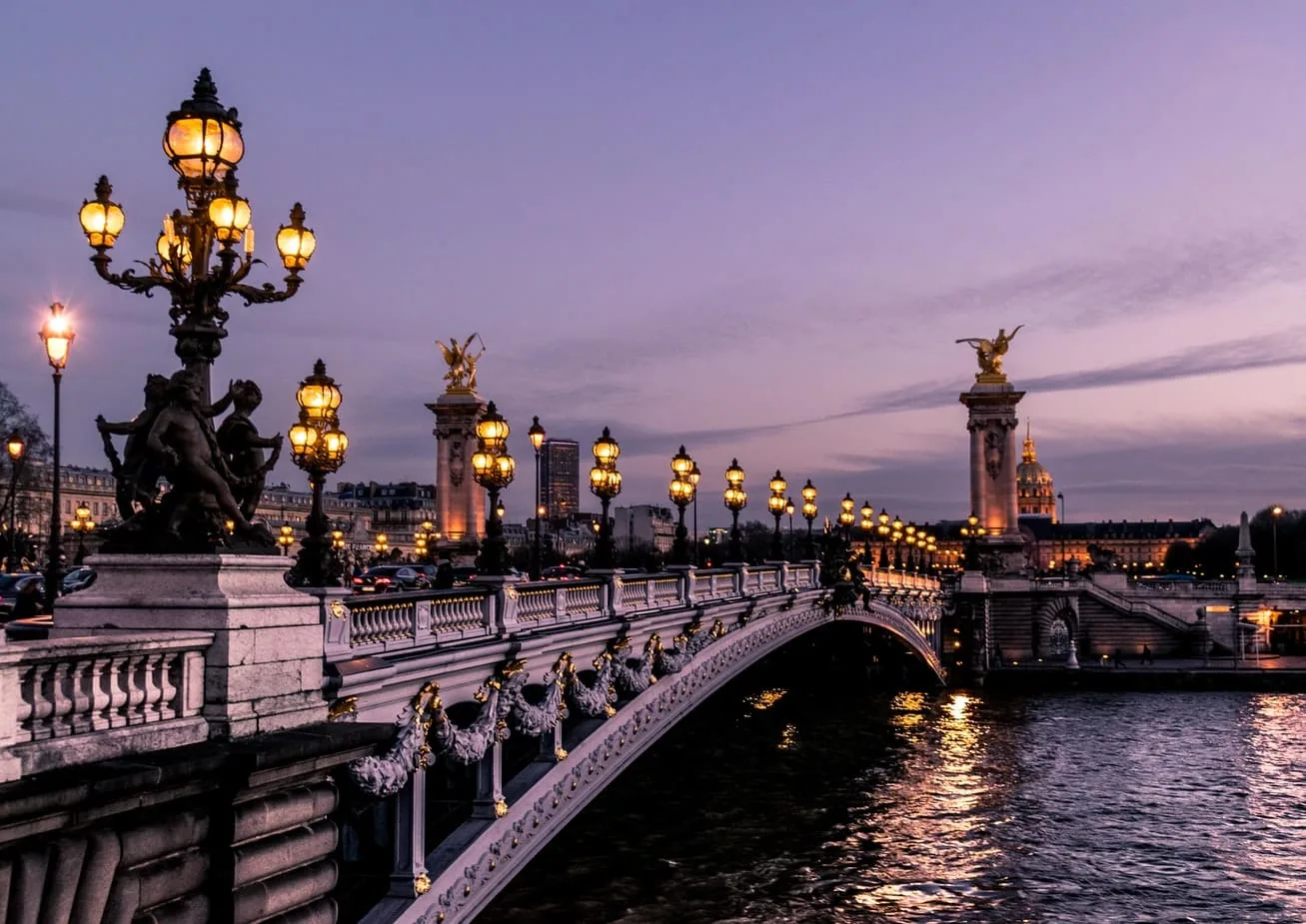Expert travel storyteller Jordan Adkins, founder of InspiredByMaps.com, brings a decade of adventures across 101 countries and 450+ UNESCO sites into rich, off-the-beaten-path narratives, melding ecological expertise with genuine, seasoned travel insights. His full bio can be found here.
France is well known for its extraordinary natural diversity, vibrant culture, and remarkable urban landscapes. Fittingly, France is also home to 45 of the more than 1,000 World Heritage Sites worldwide, as inscribed by the United Nations Educational, Scientific, and Cultural Organization (UNESCO).
France’s captivating UNESCO sites include magnanimous cathedrals, extensive national parks, and geological wonders. These sites range from the iconic Palace and Park of Versailles and the spectacular medieval town of Provins to the far-flung Lagoons of New Caledonia and iconic Pyrénées.
The theme of culture is prevalent throughout these eight sites. However, there are also important natural and mixed sites that reflect France’s remarkable natural heritage. Some of these sites are landmarks of France, but a few are rather obscure and likely only known to the most persistent of travelers.
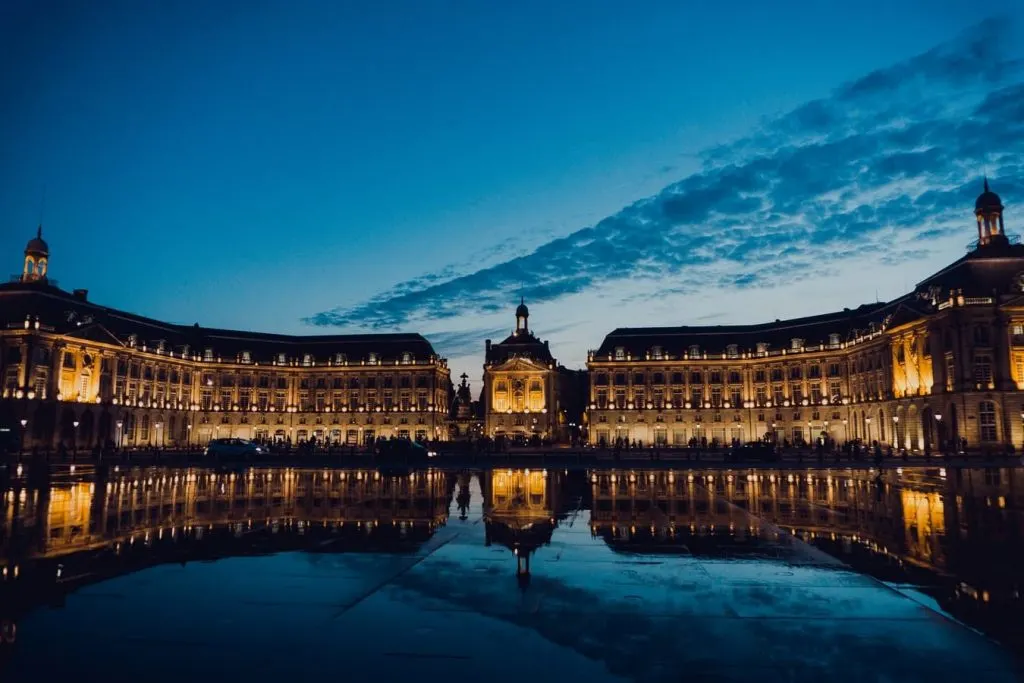
UNESCO is a bureau of the United Nations that endeavors to support the protection and growth of the world’s intellectual and cultural property and elects UNESCO sites due to their “outstanding universal value” in science, history, or culture. As a result, UNESCO Sites are meaningful to the mutual interests of humanity – and legally guarded by international treaties.
Travel influenced by UNESCO sites allows visitors to explore esoteric spots, aid preservation, obtain specific knowledge about the history of Earth and humanity – and to wonder at unequivocally majestic sites. While a few such as the marvelous landscape of Rio de Janeiro and the Singapore Botanical Gardens are famous around the world, there are far more untouristy UNESCO sites worthy of insertion in any ‘off-the-beaten-track’ bucket list.
Inscriptions settle into two categories: cultural and natural locations, or a combination of both (mixed). There are currently 45 UNESCO world heritage sites in France, 39 cultural ones, five natural ones, and one mixed. While I have visited most of them myself, I have included all sites here – so you can get an idea of what makes each special.
So, why not immerse yourself in one or more of these sites on your next France vacation? From breathtaking natural wonders to unprecedented feats of human engineering, check out our exhaustive list of France UNESCO sites to determine which places resonate with you personally. You can then use them as a roadmap for the trip of a lifetime.
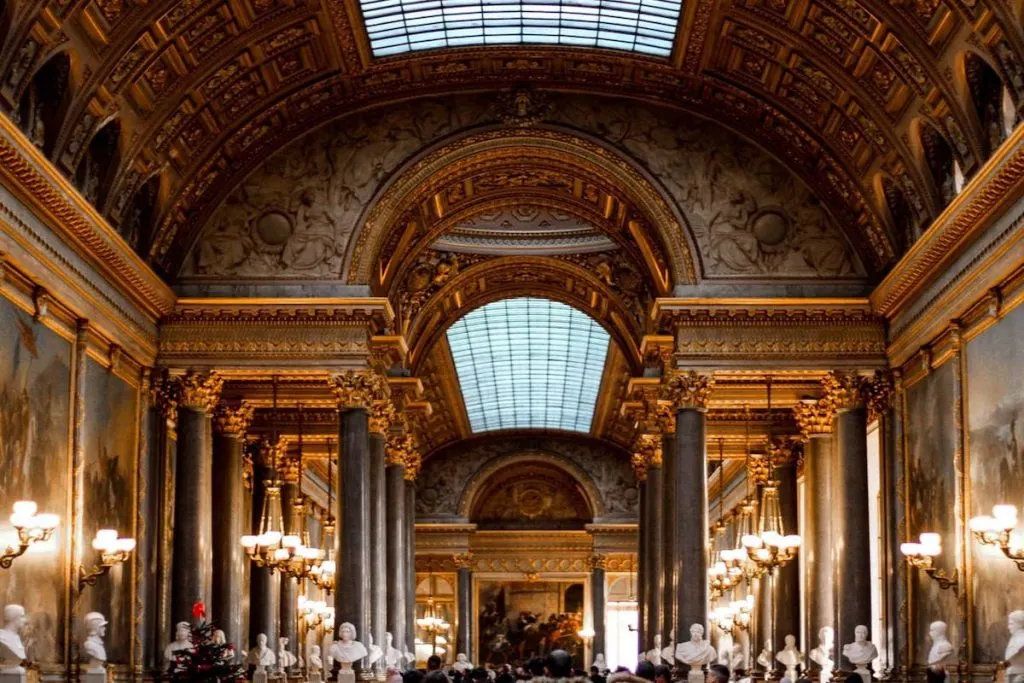
Page Contents
- Cultural UNESCO World Heritage Sites In France
- Abbey Church of Saint-Savin sur Gartempe
- Amiens Cathedral
- Arles, Roman and Romanesque Monuments
- Belfries of Belgium and France
- Bordeaux, Port of the Moon
- Bourges Cathedral
- Canal du Midi
- Cathedral of Notre-Dame, Former Abbey of Saint-Rémi and Palace of Tau, Reims
- Champagne Hillsides, Houses and Cellars
- Chartres Cathedral
- Cistercian Abbey of Fontenay
- Decorated Cave of Pont d’Arc, known as Grotte Chauvet-Pont d’Arc, Ardèche
- Episcopal City of Albi
- Fortifications of Vauban
- From the Great Saltworks of Salins-les-Bains to the Royal Saltworks of Arc-et-Senans, the Production of Open-pan Salt
- Historic Centre of Avignon: Papal Palace, Episcopal Ensemble and Avignon Bridge
- Historic Fortified City of Carcassonne
- Historic Site of Lyon
- Jurisdiction of Saint-Emilion
- Le Havre, the City Rebuilt by Auguste Perret
- Mont-Saint-Michel and its Bay
- Nord-Pas de Calais Mining Basin
- Palace and Park of Fontainebleau
- Palace and Park of Versailles
- Paris, Banks of the Seine
- Place Stanislas, Place de la Carrière and Place d’Alliance in Nancy
- Pont du Gard (Roman Aqueduct)
- Prehistoric Pile Dwellings around the Alps
- Prehistoric Sites and Decorated Caves of the Vézère Valley
- Provins, Town of Medieval Fairs
- Roman Theatre and its Surroundings and the “Triumphal Arch” of Orange
- Routes of Santiago de Compostela in France
- Strasbourg, Grande-Île and Neustadt
- Taputapuātea
- The Architectural Work of Le Corbusier, an Outstanding Contribution to the Modern Movement
- The Causses and the Cévennes, Mediterranean agro-pastoral Cultural Landscape
- The Climats, terroirs of Burgundy
- The Loire Valley between Sully-sur-Loire and Chalonnes
- Vézelay, Church and Hill
- Natural UNESCO World Heritage Sites In France
- Mixed UNESCO World Heritage Sites In France
Cultural UNESCO World Heritage Sites In France
Abbey Church of Saint-Savin sur Gartempe
Positioned in the Nouvelle-Aquitaine region of France, the Abbey Church of Saint-Savin-sur-Gartempe is an ancient abbey refounded under the safeguard of Charlemagne in the mid-11th century.
It is principally protected as France’s world heritage because of the many impressive 11th- and 12th-century murals that are preserved here and depict biblical scenes. The most well-known painting is Noah’s Ark, where a packed wooden boat is composed of pairs of animals along with a few humans . in front of the windows and several human passengers at the top deck. This mural decoration makes this structure a rare testimony to medieval tradition when churches were painted, which is not often seen.
It reminded me of the UNESCO Churches of Moldavia in Romania, which are painted – but outside! The Abbey Church of Saint-Savin sur Gartempe is protected because of its murals. Still, there is also a monk’s quarters and museum to explore.
Amiens Cathedral
Amiens Cathedral is one of the largest churches in France. Unlike some other Gothic cathedrals of the 13th century, Amiens Cathedral is the most complete one. The sculptures and the stained glass windows make it stand apart from the rest. That is why it is protected as a UNESCO World Heritage.
There are so many details worth observing inside the cathedral; it can easily take more than an hour to tour the interior. The Amiens Cathedral organ at the back of the Cathedral high over the door looks grand even today. Visit on a Sunday to hear it being played during the mass. The Baroque pulpit is supported by three figures Charity, Faith, and Hope, beautifully chiseled out of marble and wood shrouded in gold.
Many Biblical stories are told through the facade sculptures as well as through those sculptures and paintings inside the cathedral. I particularly liked the three-door arches on the western façade. They are infused with sculptures of angels and Christ on His throne with statues of Virgin and Saint John on either side.
Location: Amiens is 161km north of Paris. It is well connected by road and rail from various parts of France. Amiens is a perfect weekend destination from Paris (1hr by rail), Tille (50min) and Calais (slightly more than an hour). By road, it takes about an hour and a half from Paris.
Timings: Cathedral is open to tourists from 8.30 am to 5.15 pm in summer. Amiens Cathedral night show timings vary according to daylight hours. It is shown from 15th June to the 3rd Sunday of September. During the city’s Christmas season, the light show starts at 7 pm. The cathedral is not open at night before or after the light show.
Explored by Indrani Ghose of i Share

Arles, Roman and Romanesque Monuments
Arles is one of the most important historical cities in Southern France. This charming town on the banks of the Rhône River is one of the unmissable stops on a trip to Provence.
Arles was added to the UNESCO Heritage Site list several decades ago because of the antique ruins that have been preserved from the time when Arelate was the main city of the Roman province of Gallia Narbonensis. As a result, Arles is an excellent example of the adaptation of an ancient city to the needs of a medieval European civilization. This picture-perfect Southern French town also inspired many of Van Gogh’s paintings during the time when the Dutch painter lived here for a while.
The main monument from the Roman period is the Amphitheater that was cut directly from the rock in the 1stcentury B.C., and the gladiator fights were watched by more than 20,000 spectators in this large arena. The arena was used as a fortress in the Middle Ages with a couple of hundred buildings constructed in the interior, but later it was retransformed again to a Roman amphitheater to organize bullfights in it.
You can also visit the Roman Theater, built under Augustus about a hundred years later than the Amphitheater. Although the theater, the capacity of which is around 12.000 spectators, is quite deteriorated, it still testifies about the glorious times of the Roman Empire.
There are some other monuments left from the Roman era, such as the Baths of Constantine from the 4th century, the Cryptoportico of the Roman Forum, or the Tour des Morgues, a fortified tower from the 1st century. Some of the Romanesque buildings are also included in the UNESCO World Heritage Site, such as the Church of St. Trophime and its fascinating cloister.
Explored by Gábor Kovács from Surfing the Planet
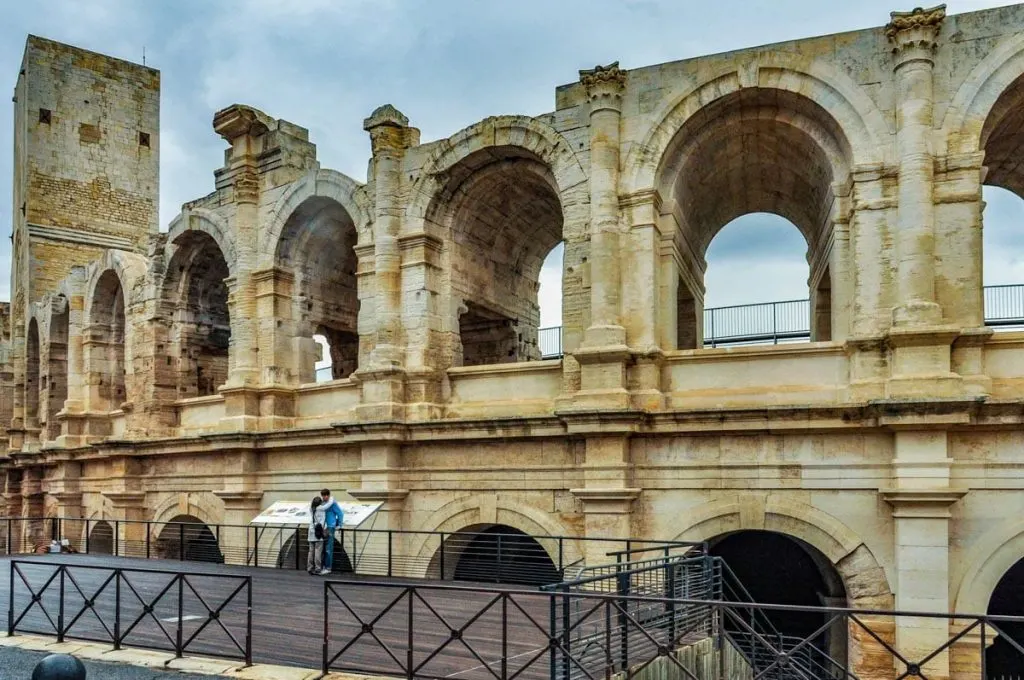
Belfries of Belgium and France
A total of 23 French towers form part of the Belfries of Belgium and France transnational UNESCO World Heritage Site. The buildings are located in municipalities across the north-east of France, including Calais, Lille, and Dunkirk.
Lille, a gateway to the region, is a little over an hour away from Paris on a high-speed TGV train and around three hours from London on the Eurostar. The belfries were inscribed by UNESCO because they are symbolic of the development of urban power during the Middle Ages. These are neither church towers, nor castle keeps. Some, though, look have the look of fortified towers; the one at Béthune is a free-standing structure dominating the market square.
Others, such as the belfry at Armentières, form an integral part of the town hall. The diversity of the belfries makes them fascinating places to explore for travelers interested in history and architecture. Climbing them means being able to look out over their respective towns and cities and enjoy outstanding perspectives.
I particularly enjoyed climbing the belfry in Arras, which rises over the Place des Héros, one of the cobbled squares in the heart of the city two-and-a-half hours’ drive north-east of Paris. The original 16th-century tower was destroyed by German artillery in World War One. The landmark was faithfully reconstructed. The effort that took indicates the importance of the belfry in Arras’s municipal identity and the desire of its citizens to see their city restored following its destruction.
From the belfry’s observation platform, it’s possible to look out onto the city’s rooftops and countryside that saw some of the First World War’s bitterest fighting.
Explored by Stuart Forster from Go Eat Do
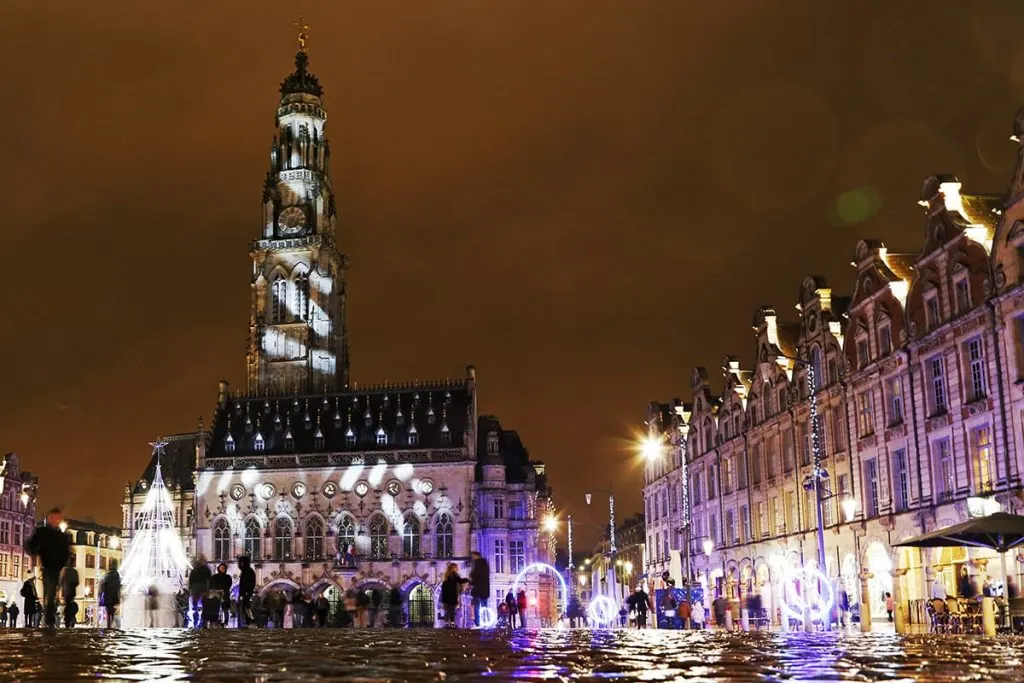
Bordeaux, Port of the Moon
Bordeaux is inscribed on the UNESCO World Heritage List under the title “Bordeaux, Port of the Moon.” Both the city and the greater Bordeaux region have been producing wine since the ancient Romans brought the tradition here over two thousand years ago.
During the middle ages, this city was the chief trading port for the export of French wine to England, and thus it was the major international city in the area. Today the city has seen a resurgence, in part due to its push to be inscribed on the UNESCO list, which it achieved in 2007. In addition to cleaning up the smog and dirt on the city’s architecture, they built the Cite du Vin, a major wine museum, and revitalized the main markets in the city.
Today Bordeaux is a sophisticated city to visit, and you would have no idea how much work went into getting it into such a pristine condition. From Bordeaux, you can visit wine chateaus in the area for wine tastings. Make sure to book ahead of time, as tastings and tours sell out early. During the day, you can also go on a city tour to learn about the history of the city as well as its important architectural sites and landmarks.
At night, take advantage of the fabulous food scene here. Make sure to ask your server for wine pairing recommendations. There’s no city on Earth where the waitstaff is more prepared and knowledgable about what you should drink during your meal!
Explored by Stephanie Craig from History Fangirl
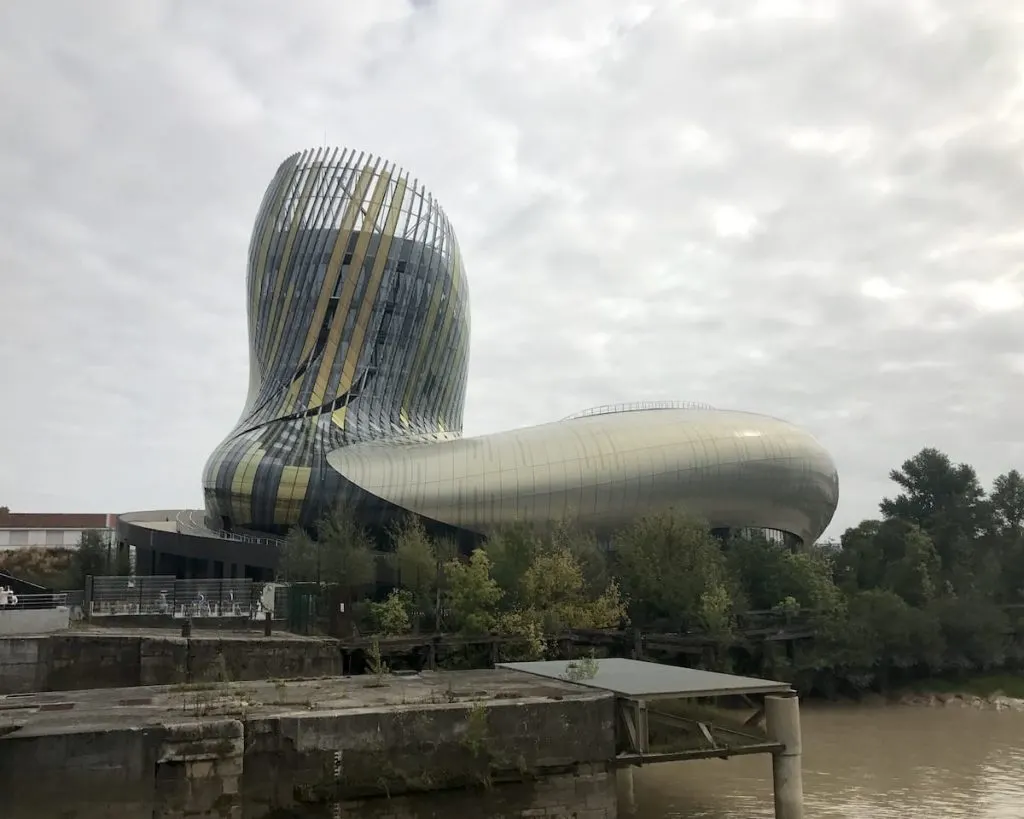
Bourges Cathedral
Located in a charming medieval town, Bourges Cathedral was designated a UNESCO World Heritage site in 1992. The cathedral was inscribed as an outstanding example of Gothic and Romanesque architecture.
Inspired by Notre-Dome-de-Paris, Bourges Cathedral is known for its symmetrical proportions, together with its stained glass windows. Work started on the cathedral in 1195. It was completed around 1230 and dedicated to Saint Stephen. There are 183 stained glass windows, some of which date from 1215. The Annunciation Window in the Chapel of Jacques Coeur is the best known.
The crypt is one of the largest in France. It contains the tomb of Jean 1st, Duke of Berry. Surprisingly, the crypt isn’t underground and is quite light. Underneath the crypt, there was originally a Romanesque church where the archbishops of Bourges were buried. What we love about the cathedral is the builder’s sense of fun. On the cathedral facade, the builders included a sculpture of buttocks hidden amongst a decorative frieze.
From Bourges Cathedral Tower, you have panoramic views over the town. Although there are actually two towers, the North Tower is the only one open to the public. It’s worth climbing the 396 steps to the top, as you can see for miles. Visiting the cathedral is one of the top things to do in Bourges. It is located on Place Etienne Dolet in the center of Bourges.
You can reach Bourges by train from Paris in two hours, or fly to the airport at Tours Val de Loire. From there, it’s around 1 hour and 45 minutes’ drive to Bourges.
Explored by Suze and Paul from Luxury Columnist

Canal du Midi
The 17th-century canal connects the Atlantic Ocean with the Mediterranean near Narbonne and Sète and is a feat recognized in its cultural status. Canal du Midi stretches up to 241 kilometers in length along Southern France through ancient villages, Roman fortifications, and famed vineyards.
The 240km-long waterway is a cultural site included on the list of UNESCO sites in France defined by its beauty. With huge plane trees that tower above both banks, their leafy branches often touch to form an arc of green above the water from bank to bank. The Canal du Midi was a remarkable engineering achievement when it was finished in 1681.
Sponsored by an engineer and canal-builder Pierre-Paul Riquet, he blended the Canal Royal du Languedoc (later to be renamed the Canal du Midi) so beautifully into the surrounding landscape. However, there were difficulties in supplying water to the highest point of the canal, which stood at 189 meters above sea level. Many doubters told Riquet that the canal would not have sufficient water to operate, but he decided to capture the waters of the Black Mountains and bring them to the threshold of Naurouze.
Riquet created the Bassin de Saint-Ferréol, followed by a channel that carried the waters to the threshold. In time, due to this water reserve tending to dry up, the shared reach was increased and flanked by the two famous locks that are named after the Atlantic Ocean and the Mediterranean Sea.
This is a great place for cycling, walking, or explore the towpaths running parallel to the canal. If you don’t feel like working out, simply watch the scenery pass by as you relax on the deck and sip on a cold drink. On a clear day, you can see the Pyrenees far away in the distance, whereas closer to hand is more than a thousand acres of wine grapes and the vineyards that stretch as far as the eye can see.
Explored by Ivan From Mind The Travel
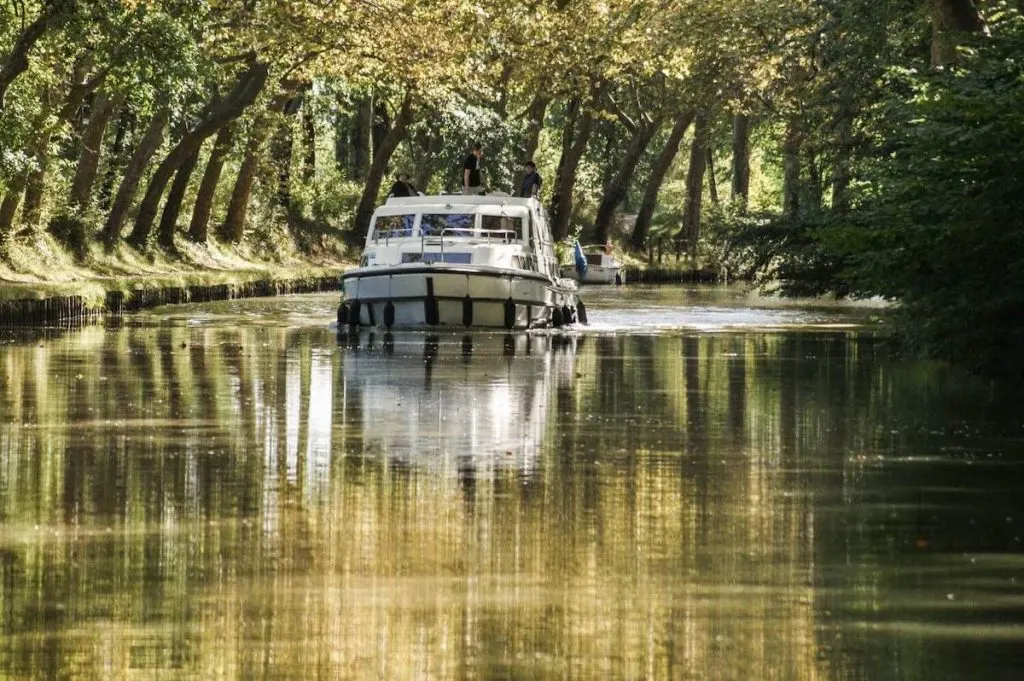
Cathedral of Notre-Dame, Former Abbey of Saint-Rémi and Palace of Tau, Reims
France is teeming with UNESCO World Heritage Sites, and one of the most impressive that I have visited was the Reims Cathedral, or Notre-Dame de Reims in French. While many people head to the city to take a Champagne tour from Reims, there are so many other impressive things to do in the city, such as visit this historic religious icon despite its location in the heart of Champagne country.
The Notre-Dame de Reims is a church dedicated to the Virgin Mary, and the reason it is so renowned is that it served as the coronation location for the past kings of France. Over one million people annually visit the famous sight, and you can go in independently or as part of a tour when visiting Reims.
The Cathedral dates back to the 5th-century and was allegedly founded by Bishop Saint Nicasius. Reims Cathedral, at least what you will view today, dates back to the 13th-century when the construction began (and ended in the 15th-century). It is noted to be a very prime example of High Gothic architecture that was initially built to replace a church that was destroyed in a 1221 fire.
Needless to say, WW1 had its impact on the church, causing major damages to it. It was restored once again at the beginning of the 20th-century. The Reims Cathedral, along with other city sites such as the former Abbey of Saint-Remi and the Palace of Tau, was added to UNESCO’s list in 1991.
Visiting the Reims Cathedral is easy if you’re in Reims, a fantastic weekend break in France. The church is in the middle of the city and located near all of the other famous attractions. The best way to visit the cathedral is on a free guided tour with the Reims City Card– you will have the chance to gain knowledge about the landmark while marveling at its impressive and ornate details.
Explored by Megan from Meganstarr.com
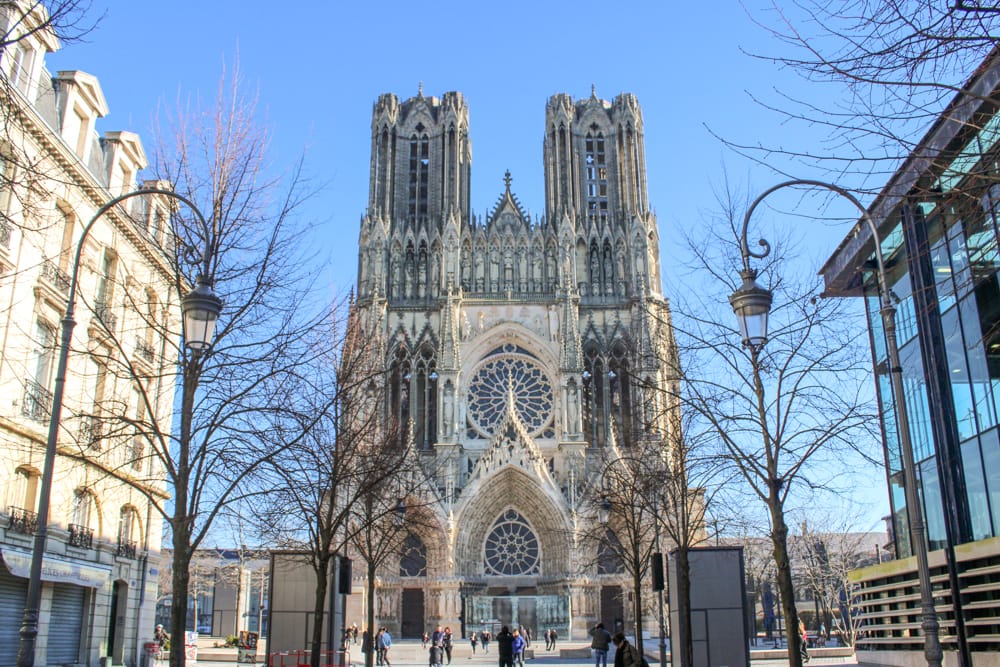
Champagne Hillsides, Houses and Cellars
The Champagne Hillsides, Houses, and Cellars site is arguably one of the tastiest UNESCO World Heritage Sites in Europe. But why is the Champagne region a UNESCO Site? Mainly because it is one of the most iconic beverages that can look back on centuries of history and longstanding traditions that are extremely influential to this region and beyond. The Champagne and most of its residents live for this drink. They are either involved in the production, selling or promoting of Champagne or know someone who is.
The Champagne UNESCO Site actually consists of 3 locations: the historic vineyards of Hautvillers, Aÿ and Mareuil-sur-Aÿ, the Saint-Nicaise Hill in Reims, and finally the Avenue de Champagne and Fort Chabrol in Epernay. Each of the three locations focuses on a step in the Champagne production process: Growing the grapes on the lush hillsides, producing the champagne and aging it in the Cellars, and at last, distributing it all over the world through the famous Champagne Houses.
If you are a fan of the bubbly drink, I highly recommend you plan a visit there. You will get to learn about the Champagne making process, can visit some of the most iconic Champagne Houses like Mumm & Co, Moët et Chandon, and Perrier-Jouët, and of course, taste your way through various Champagne tastings. The epicenter of the Champagne region is Epernay, where you can wander along the Avenue de Champagne. This street is home to the Who-is-Who of Champagne making and after the Champs-Elysee the most expensive address in France.
Visiting the Champagne is not just educational, but also a very tasty endeavor.
Explored by Maria Haase from EuropeUpClose.com
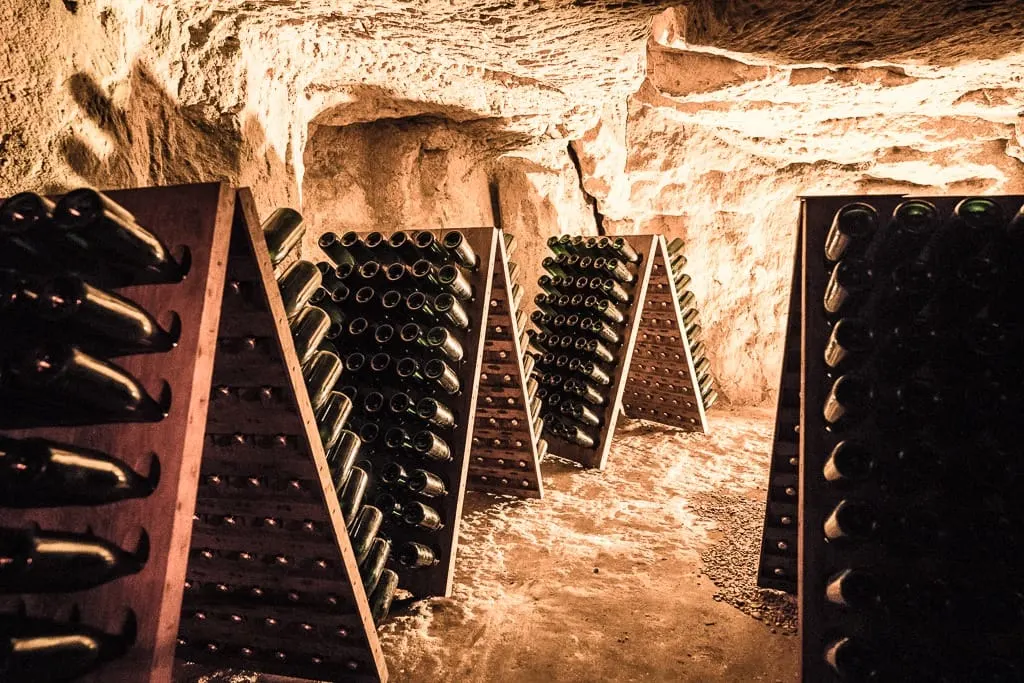
Chartres Cathedral
A masterpieces of the French gothic style about 80 km southwest of Paris, the Chartres Cathedral’s construction started in 1145. It wasn’t finished before a fire destroyed in 1194, after which its reconstruction started and took 25 years.
The Cathedral denotes the high point of French Gothic art and is quite the sight to behold. The expansive yet ornate nave, the porches decorated with exquisite sculptures from the 12th century, and the exalted 13th-century stained-glass windows, all in exceptional condition, consolidate its appeal.
It is protected by UNESCO as one of the most genuine and complete works of religious architecture of the era. Dedicated to the Virgin Mary, it was among the most popular pilgrimage destinations in all medieval Western Christianity.
This Cathedral is free to visit and utterly spellbinding.
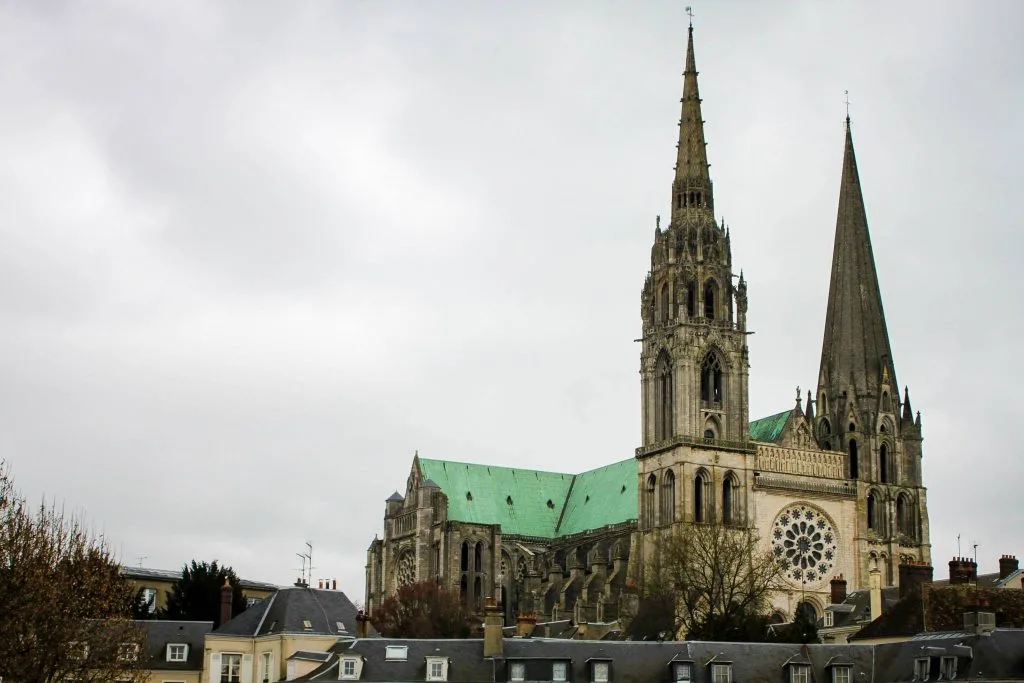
Cistercian Abbey of Fontenay
Fontenay Abbey is a former Cistercian abbey located in the Burgundy region of France that was home to monks from the 12th century until well into the 18th century when major dechristianization during the French Revolution led to all of the monks leaving the abbey.
The site was then transformed into a paper mill that ran for a number of years before being brought and restored by a private owner, Edouard Aynard in the 1900s.
In 1981 the abbey became a UNESCO World Heritage Site due to it being located in a valley remarkable beauty as well as the fact that it is the oldest preserved Cistercian abbey in the world. This heritage status allowed visitors the chance to explore this wonderful site, soaking up the atmosphere of the abbey. The complex comprises a Romanesque church, cloisters and chapter house, sleeping quarters, bakery and ironworks, and pretty much the only feature that is lacking from the original design is the refectory that was destroyed in 1745.
Guests can enjoy a guided tour of the monastery buildings, the manicured gardens, the lapidary museum, and the library learning about the history of the buildings as well as gaining an insight into the lives of the monks who resided here.
Fontenay Abbey is situated between Auxerre and Dijon in the east of France and can be easily reached from either city in just over an hour (by car). Alternatively, visitors can travel to the area by train, with journeys taking around 1h40 from Lyon and 2h15 Paris (on the fastest routes).
Explored by Chrysoula from Historic European Castles
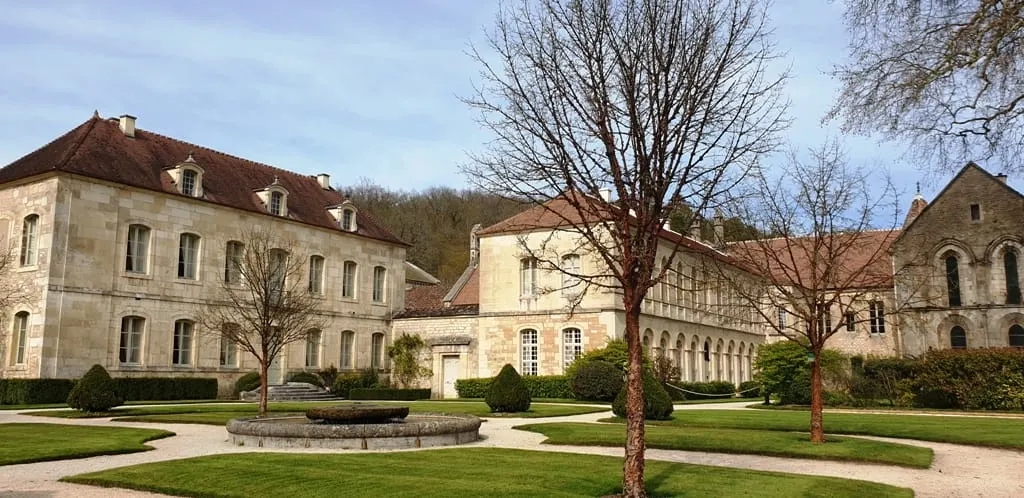
Decorated Cave of Pont d’Arc, known as Grotte Chauvet-Pont d’Arc, Ardèche
Discovered inside a limestone plateau of the Ardèche River in southern France, the world heritage site protects the world’s earliest-known and best-preserved figurative drawings. Dating back to around 30,000 years ago, the site is an outstanding testimony of prehistoric art and significantly increased our understanding of human development.
Rather fortuitously for us today, the cave was sealed off by an apparent rockfall around 20,000 years ago. The site remained closed until its recent discovery in 1994. This ensured the cave’s pristine situation. More than 1,000 images have been reviewed on its walls, with a diversity of both anthropomorphic and animal subjects. Of excellent aesthetic quality, the paints express a spectrum of different techniques, including the accomplished use of shading, blends of paint and engraving, anatomical accuracy, three-dimensionality, and movement.
Interestingly, they also depict several dangerous animal species that would have been extremely challenging to observe, such as mammoth, bear, cave lion, rhino, bison, and auroch. Within the caves were also found over 4,000 remains of prehistoric fauna and human footprints.
Given the incredibly well-preserved condition of the site, it is easy to understand why access is severely restricted. So unless you are a researcher with impeccable credentials (and even then), you will not be able to visit the Pont-d’Arc Cavern. A replica cave, however, has been set up just a few miles from the original.
Episcopal City of Albi
The beautiful Episcopal City of Albi in southern France was declared a UNESCO World Heritage Site in 2010 and boasts numerous must-see architectural sites. Consisting of four medieval districts, largely built from red-hued bricks, two of the Episcopal City’s buildings dominate the skyline.
Thought to be the largest brick building in the world, Cathedral Ste-Cecile began life back in the 13th Century as a fortress to protect against invading crusaders. Even today, this imposing place of worship, with its 78-meter tall bell tower, oozes importance. It may have a somewhat austere exterior but the interior of the Cathedral is a sight to behold. Featuring stunning stained glass windows, hand-sculpted wooden carvings and vaulted ceilings, it’s hard not to be impressed.
Next to the Cathedral, the Berbie Palace is another UNESCO site. This Bishops Palace, which also dates back to the 13th Century, is considered to be one of the best-preserved episcopal palaces in France. Whilst the bishops no longer reside here, both the Tourist Office and the Toulouse-Lautrec Museum – which holds the most complete collection of the artist’s work in the world – are housed in the Berbie Palace.
Adjoining the Palace, and offering superb views of the Tarn River below, are the Palace Gardens. These formal gardens, which are based on the style of the gardens at Versailles (although on a smaller scale), can be viewed from a walkway on the old palace ramparts.
Spanning the River Tarn below the Berbie Palace Gardens is the Pont Vieux (old bridge), dating back to 1040. One of the most-photographed sites in Albi, the eight-arched bridge originally featured drawbridges at each end to stop invaders, before it became a toll road in the 12th century as commerce increased between the Mediterranean Sea and the Atlantic Ocean. For wonderful views of the Pont Vieux and the Episcopal City, cross the bridge and follow the signs to Pont Vue, a designated viewing area.
Albi is located in the Tarn department of southern France. It is 76 kilometers northeast of Toulouse and can be reached by car in around one hour and by train in 90 minutes.
Explored by Carolyn of Holidays to Europe

Fortifications of Vauban
Sébastien Le Prestre de Vauban: military engineer, advisor to Roi Soleil Louis XIV, France’s most famous king, and builder of forts, 12 of which have found their place on UNESCO’s World Heritage list. In Aquitaine in southwestern France, the kids and I visited Citadel de Blaye and Fort Médoc, two of Vauban’s constructions.
On the right bank of the Gironde estuary is Citadel de Blaye, on the left is Fort Médoc. And as if those two weren’t enough, our engineer also built Fort Paté on an island. Together, the fortifications closed off the river and protected the city of Bordeaux, 50 km upstream, from enemy ships.
The three are known as Le verroux de l’estuaire (Bolt of the estuary) or Vauban’s trilogy. Blaye is located on a rocky headland, with impressive views all round. It is a well-preserved citadel, and the old barracks now serve as workshops for artists and craftsmen. There are restaurants and a hotel, as well as a museum showing the history of the area; a cozy, colorful place to stroll, with interesting handicrafts on offer.
Across the river, in Cussac-Fort-Médoc, square-shaped Fort Médoc was empty when we visited on a hot July day, and as such a place to let the imagination (and the kids) run free. The views are great from this side, too, especially from the high point by the Guardroom.
Fort Médoc is surrounded by a wooded area, good for walks. Or maybe a picnic on these historic grounds? Driving/cycling up here, you’re on one of Bordeaux’ many wine routes. Fort Paté on the island is off-limits. Private property. But you can sail past; a car ferry connects the two banks of the Gironde. It is also possible to take a 2-hour guided cruise that takes in the underground passages of the citadel.
Explored by Anne-Sophie Redisch from Sophie’s World
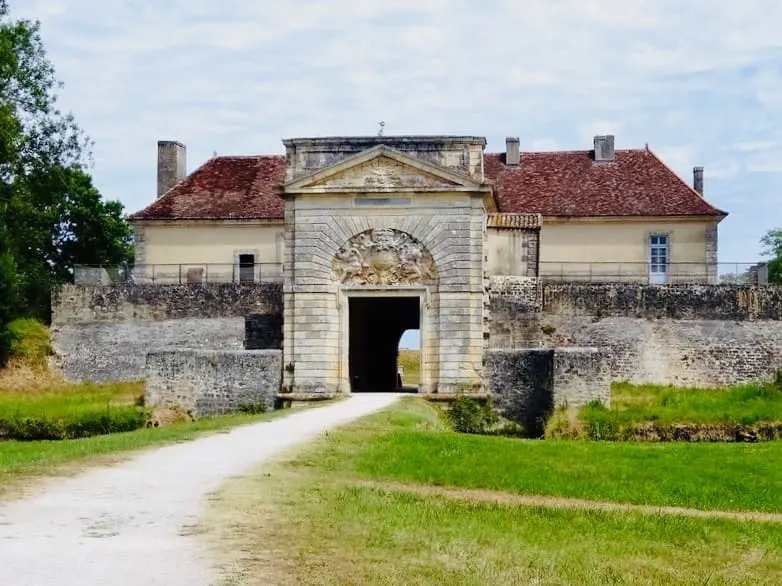
From the Great Saltworks of Salins-les-Bains to the Royal Saltworks of Arc-et-Senans, the Production of Open-pan Salt
The Saline Royale (Royal Saltworks) is a classical building at Arc-et-Senans in eastern France, on the edge of the Forest of Chaux. Built by famous Parisian architect Claude-Nicolas Ledoux in 1775, the Royal Saltworks was the first significant success of industrial architecture, echoing the Enlightenment ideals.
The large, semicircular complex was intended to sanction a logical and hierarchical organization of work and be the first step in constructing an ideal city, a scheme that never materialized.
The nearby Great Saltworks of Salins-les-Bains ran for over 1200 years (until it closed in 1962), and including an underground gallery, hydraulic pump, and boiler room from different eras. Between 1780 to 1895, the saltwater from this site ran through 21 kilometers of wood pipes to the newly constructed Royal Saltworks of Arc-et-Senans (the saltworks being built near the immense Chaux Forest to secure its stocks of wood for fuel).
Taken together, the saltworks in Salins-les-Bains and Arc-et-Senans demonstrate exceptional universal value in showcasing the various means of extraction of salt from the Middle Ages, and probably from prehistoric times, through to the 20th century.
Today spa activity uses the area’s salt, but no mining takes place. The site is largely open to the public, and the Royal Saltworks has displays of futuristic projects that were never built and temporary exhibitions. If you travel along the train line from Besançon to Bourg-en-Bresse, you can stop at the station for Arc-et-Senans for a quick look. You’ll only need around an hour.
Historic Centre of Avignon: Papal Palace, Episcopal Ensemble and Avignon Bridge
In southwest France’s Provence-Alpes-Côte d’Azur region, the city of Avignon has been recognized by UNESCO for the group of 14th-century buildings that lie right at its heart – the Historic Centre of Avignon: Papal Palace, Episcopal Ensemble and Avignon Bridge.
In 1309, Avignon became the seat of the Papacy after the Catholic Church decided to escape the corruption which was engulfing Rome. So they set up a new base in Avignon where they stayed for the next 68 years, leaving their mark on the city with a selection of impressive monuments.
The Palais des Papes (Pope’s Palace) is the biggest Gothic palace in the world, covering 15,000 square meters. Inside you can see some of the ornately painted original décor, with 25 rooms open to visitors. The palace also hosts a sound and light show on summer evenings – and has a rooftop terrace with one of the best views over Avignon.
The palace is just the start though – in the square are the Petit Palais museum of medieval art, the Basilica of Notre Dame des Doms with its golden statue of the Virgin Mary, and the Baroque building which housed the city Mint.
But most famous of all is the Saint Bénézet Bridge over the River Rhône – better known as the Pont d’Avignon. Only four of the bridge’s original 22 arches are still standing so you can’t cross the river on it, but it’s become a French icon thanks to a 15th-century children’s song about dancing ‘Sur le Pont d’Avignon’.
Take a walk along the opposite bank of the Rhône for the best views, with the bridge in front and the pale stone buildings of the palace behind on the Rocher des Doms – especially beautiful at sunset when they take on a golden glow.
Explored by Lucy from On the Luce
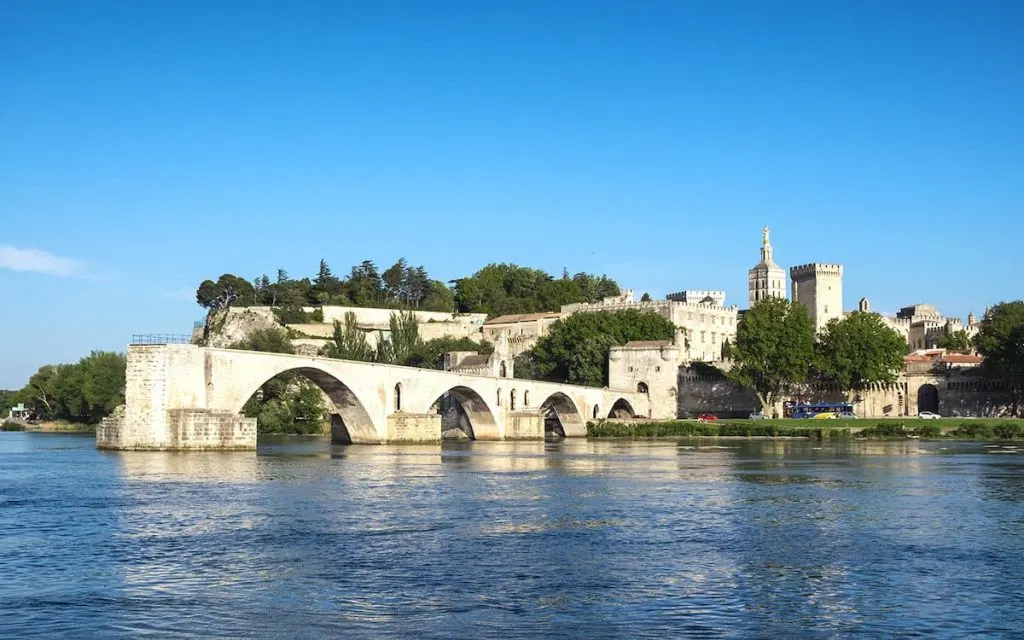
Historic Fortified City of Carcassonne
The historic fortified city of Carcassonne is an extremely well-preserved medieval complex located in the Languedoc region of southern France. Perched on a hilltop and surrounded by a large wall, it truly is a breathtaking sight.
Due to the pristine condition of the town and its beautiful historic buildings which include a Gothic Cathedral and a beautiful 12th-century castle, called Chateau Comtal, the city Carcassonne became inscribed as a UNESCO World Heritage Site in 1997. The other reason it was recognized by UNESCO was because of the extensive restorative work that was completed in the 19th century on the town’s castle, walls, and church.
My personal highlight of visiting Carcassonne was the feeling of being transported to another time period. As you walk through the entrance gate and into the cobbled streets of the town center, you immediately feel like you’ve stepped back in time a few hundred years. Exploring Chateau Comtal and walking along the town’s fortifications will give you a different perspective of the town and also see the incredible views over the surrounding countryside.
Getting to Carcassonne is easy to do as there is an airport that is easily accessible from most major cities in Europe. If you are already driving around France with a car, Carcassonne makes the perfect addition to any south of France road trip itinerary. It’s located one hour away from Toulouse by car or just under two hour’s drive from Montpellier.
Explored by Ann from The Road Is Life

Historic Site of Lyon
It’s not hard to see why Lyon is a World Heritage Site. Of course, it has plenty of beauty and art and extraordinary architecture but what is most striking about France’s second-largest city is its historical diversity: the city dates back 2000 years, but as it expanded, each period took over a neighborhood. As a result, you’ll be able to retrace the city’s history through the four areas covered by UNESCO’s list.
The first of these is Fourvière, the hill which once hosted Lugdunum, the Roman capital of the Gauls. It is home to some outstanding Roman theaters as well as the city’s Basilica. Not to be neglected is the view down the hill into Lyon – the best in the city.
The second protected part of town is Old Lyon, whose cobblestones and tiny passageways, known as traboules, linked the city’s hills. A wander through the traboules is a highlight of a Lyon visit.
The next on our list is the Croix-Rousse, once home to 30,000 silk workers, called canuts. The taller windows on the upper floors of certain buildings are reminders of the weaving looms that were once housed there. While most of the canuts are gone, the silk industry is remembered through a museum, workshops and many fashionable boutiques.
The Presqu’ile is our final stop, whose grandiose squares and buildings remind us instantly that we are in France. This is also where you’ll find many of Lyon’s most famous murals, often soaring creations whose minute realism is delightful.
Getting to Lyon is a simple matter, with regular TGV trains running from Paris, several trains a day from Geneva, and an international airport. If you’re driving from Paris to Provence, it’s the perfect halfway stop – Lyon is also known as France’s gastronomical capital and a worthy lunch experience.
Explored by Leyla Giray Alyanak of Offbeat France
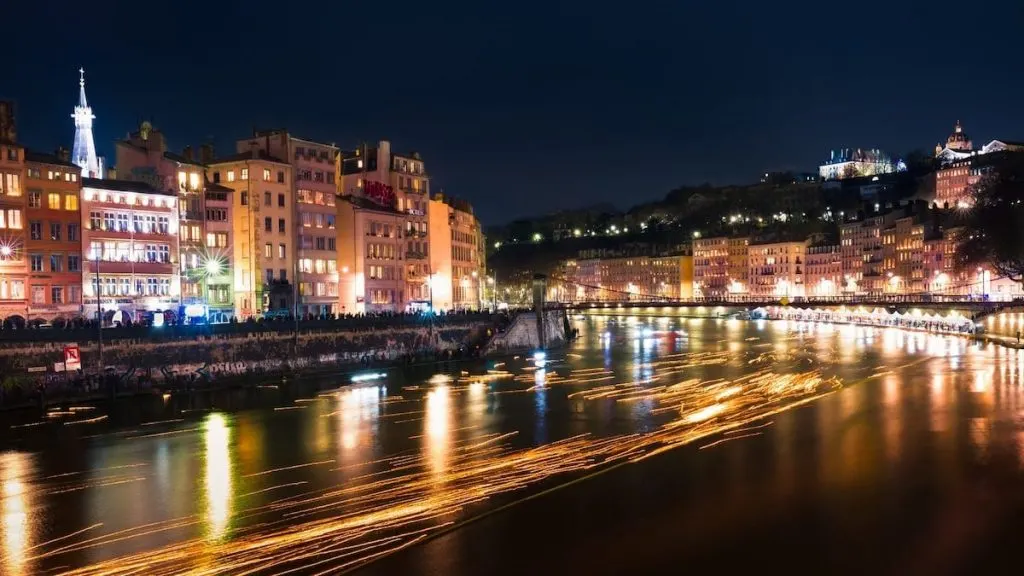
Jurisdiction of Saint-Emilion
Saint-Émilion, a medieval village with a history stretching across 13 centuries, is a doubly special UNESCO World Heritage Site. Located just 1 hour from Bordeaux in the South West of France, it’s not only the charming fortified village itself that was inscribed as UNESCO site. As a cultural landscape with roots of winemaking dating back to Roman times, the vineyards themselves were also the first-ever to be inscribed into UNESCO when the Jurisdiction of Saint-Émilion won this distinguishment in 1999.
Usually a day tour for visitors from Bordeaux, Saint-Émilion deserves far more than the few hours to explore. The village itself was impressively carved out of the limestone promontory it’s perched upon. Like a bowl, the gates to the fortifications surrounding the village quickly drop down steep tertres (ancient streets) and deliver visitors to a charming labyrinth of shops and sights.
If there’s one must-see, it’s the 12th-century Monolithic Church. The name literally means carved out of a single stone and the underground church is the largest of its kind in Europe. Only accessible on a guided tour through the Saint-Émilion tourism office, it’s well worth the visit to see this impressive church with its well-preserved murals and its catacombs.
Of course, Saint-Émilion is famous for its wine and you can’t leave without a visit to one of the more than 1000 surrounding wineries. There’s a variety of ways to visit the various nearby châteaux from tuk-tuk tours to regal castles just a short walk outside the village.
There’s even a former convent located within the walls of Saint-Émilion where AOC Crémant de Bordeaux is aged in the maze of underground quarry tunnels that once served the purpose of quarrying the limestone used to build the facades of châteaux, the 18th-century Neo-classical buildings of nearby Bordeaux and the intricately carved facades of Saint-Émilion.
Explored by Jennifer & Tim from The Bordeaux Travel Guide
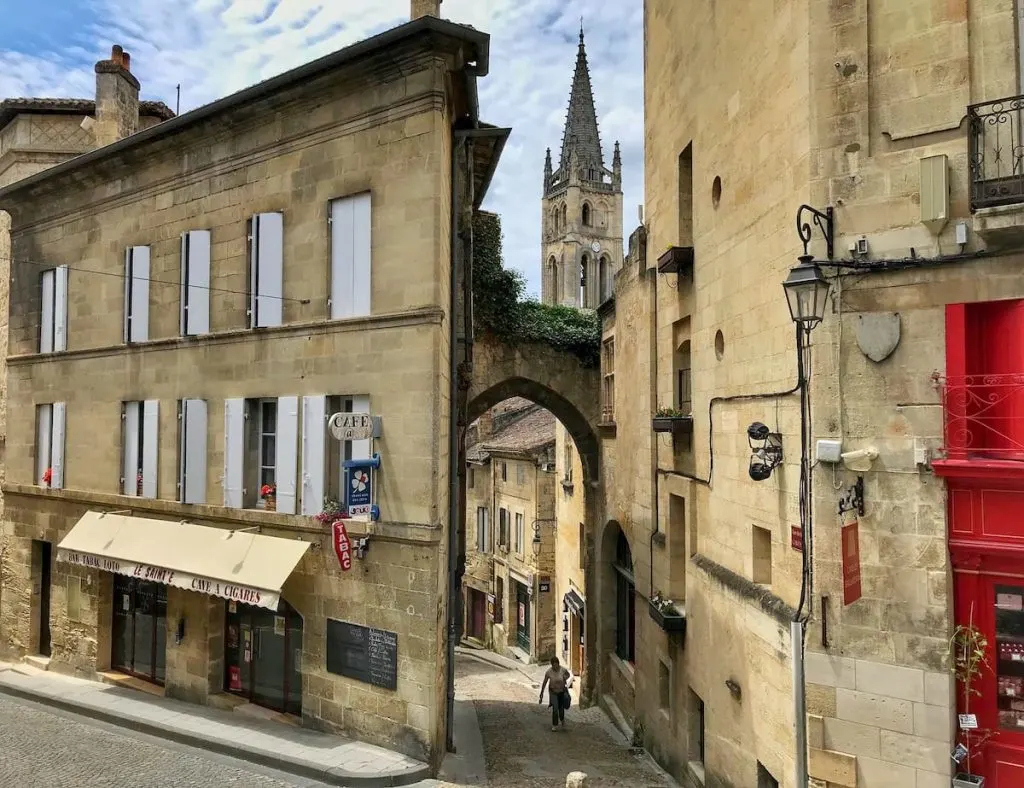
Le Havre, the City Rebuilt by Auguste Perret
At the mouth of the Seine River, Le Havre was founded in 1517 to replace nearby silted up ports such as Honfleur. It’s now the second-largest port in France with vast amounts of freight traffic and cruise ships.
Much of Le Havre was destroyed in World War II so there isn’t much historic architecture left. It was rebuilt after the war with Auguste Perret’s designs which gave it a uniform look and feel, and it is now considered an outstanding post-war example of urban planning and architecture which earned it a spot on the UNESCO World Heritage list.
Although you may not consider stopping in Le Havre when planning to explore the Normandy region, I’d urge you to reconsider as it may surprise you. Its little gems hidden amidst the modern buildings is what made me love it and had me out exploring. Le Havre is proud of its Impressionist painters who found inspiration in Normandy and the Malraux Museum, France’s second-largest collection of impressionist paintings, is a great place to start exploring the city.
The museum itself is also art – designed from glass and metal with views of the port through a sculpture called “The Eye”. Also designed by Auguste Perret, St. Joseph’s Church looks austere from the outside but inside is beautiful, especially when the light shines through its thousands of stained glass windows which gives a kaleidoscope effect.
Outdoor lovers will enjoy the Hanging Gardens, a park in a former fortress with grass-covered walls, greenhouses with plants from five continents, and views of the beach and city. Or on Le Havre’s pebbly beach, you can stroll the boardwalk and watch the sailboats and sail boarders gliding along.
It is easy to get to Le Havre either as a stop on your Normandy road trip, take the train from Paris (about two hours via Rouen), or arrive by cruise ship!
Explored by Lee and Stacey from One Trip at a Time
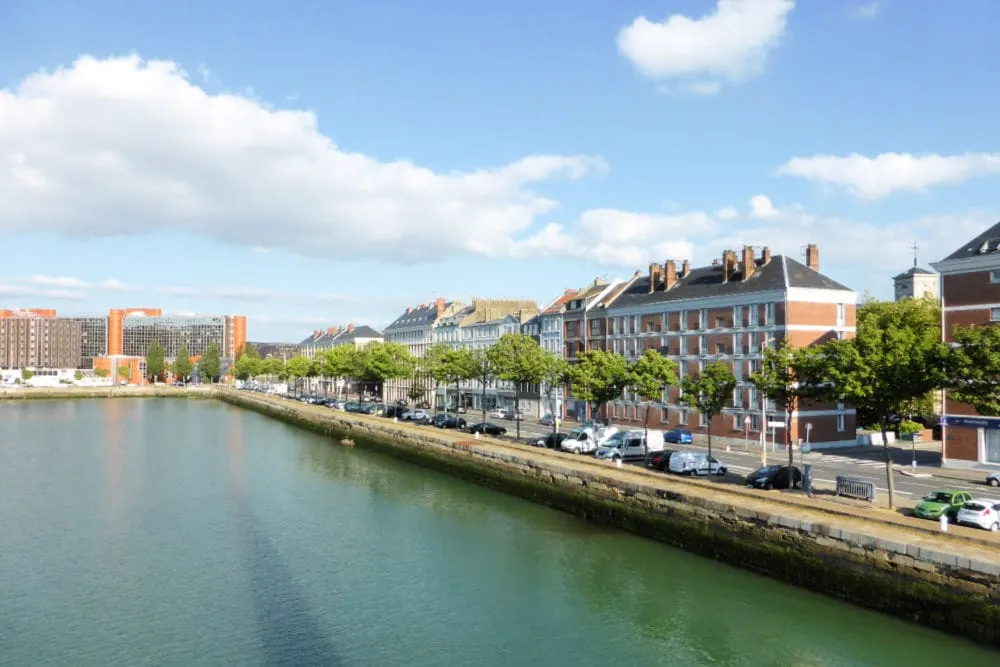
Mont-Saint-Michel and its Bay
Mont Saint Michel in Normandy, France, is one of the most popular day trips from Paris. This medieval abbey located on one of the routes leading to Santiago de Compostela (Chemin de St Jacques in France) is dedicated to the archangel Saint Michel, who crowns and protects the building.
Mont Saint-Michel is an important pilgrimage center in France since medieval times and one of the most visited tourist attractions in France. Mont Saint-Michel’s setting is spectacular, built on a small and rocky peninsula which becomes an island when the tides are high. Until recently, there was a car park connecting Mont Saint-Michel with the mainland.
After many years of discussions, the authorities ordered the dismantling of this car park and now the place looks more beautiful than ever. Both the abbey and the bay are listed Unesco World Heritage site since 1979 because of its importance for the Christian world but also for its incredible setting, the perfect blend architecture – landscape.
On Mont Saint-Michel, there is a building since the 8th century, a small chapel which evolved over the centuries into more important constructions financed by its protectors. The current abbey is a mix of different architectural styles built on different levels being the Romanesque and Gothic styles the most predominant.
The best way to visit Mont Saint-Michel from Paris or the main cities in Normandy is by car. If you prefer to use public transportation, take the train to Pontorson – Mont Saint-Michel leaving from Paris Montparnasse train station. From Pontorson, there’s a shuttle running 5 times a day that takes you to the abbey (25 minutes).
It is recommended to visit Mont Saint Michel when the tides are high because the setting is much more spectacular. You can easily check the tides calendar online.
Explored by Elisa from World in Paris
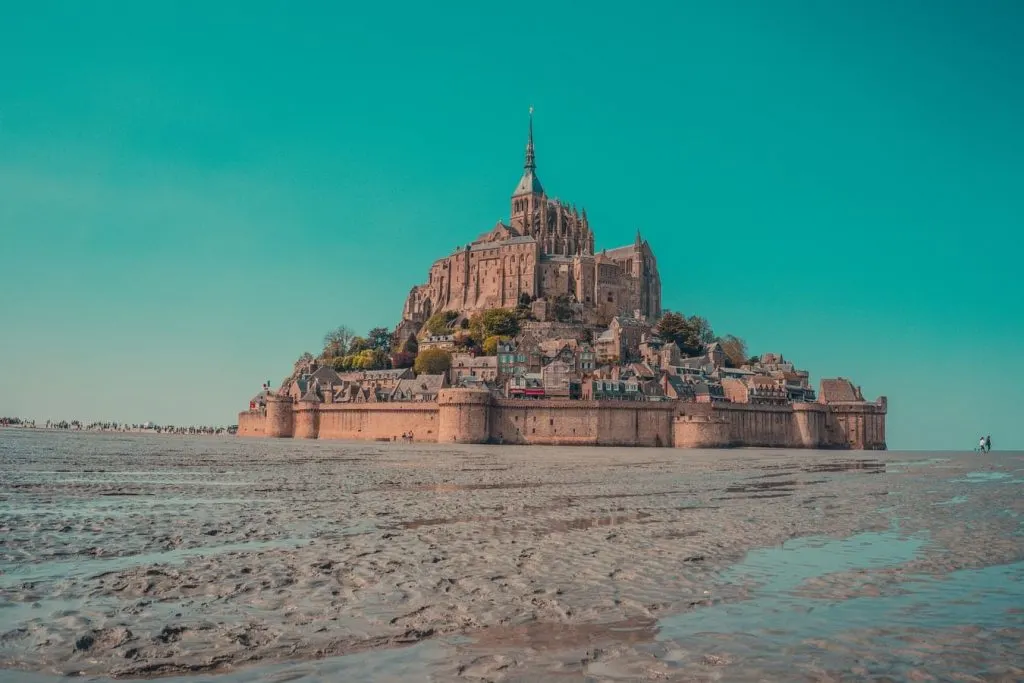
Nord-Pas de Calais Mining Basin
A world heritage site in France that speaks to the countries industrial heritage, the Nord-Pas de Calais Mining Basin is a striking landscape developed by over three centuries of coal extraction from the 1700s to the 1900s.
The UNESCO listed sites protect 109 separate elements in a 120,000 hectares area, including mining pits (the earliest of which dates from 1850), associated lift infrastructure, slag heaps, coal transport infrastructure, and various railway stations. Also included in the site are workers’ estates and mining villages.
These sites provide evidence of the journey to produce model workers cities for miners during this time and further represents a significant era in the history of industrializing Europe. The Nord-Pas de Calais Mining Basin is located on the northern border of France next to Belgium. Thich is not coincidental as the area mostly developed after in 1815 France lost access to Belgian mines.
For visitors, there is a museum in the historic mining center in Lewarde, but it is not very equipped for non-French speaking guests. Don’t expect the raw industrial beauty of other mining UNESCO sites like the Cornwall and West Devon Mining Landscape or the outstanding Zollverein Coal Mine Industrial Complex in Germany.
Palace and Park of Fontainebleau
A medieval castle and consequent palace famously served as a residence for the French monarchs from Louis VII to Napoleon III. Located 55 kilometers southeast of Paris, Fontainebleau is also one of the largest French royal châteaux.
A medieval royal hunting lodge hidden in a vast forest, Fontainebleau was first used by the kings of France in the 12th century. I wasn’t until the 16th century that is was transformed, expanded, and embellished by François I, who desired to make a ‘New Rome’ of it. The need to enlarge and decorate this enormous palace brought many Italian artists here who co-operated with French painters, sculptors, and architects, resulting in what is now termed French Renaissance art.
Today, Fontainebleau is still surrounded by an expansive forest-park, at the heart of which rests an Italianate palace with notable Renaissance and French artistic traditions. While by no means quiet, it is less busy than Versailles and takes around 35 minutes by train to reach. There are over 1500 rooms, 130 hectares of park space, and more furniture than any other castle in Europe.
That’s what you get when French monarch for almost eight centuries lives here, I guess.

Palace and Park of Versailles
The Palace of Versailles has been classified as a World Heritage Site for 30 years and is one of France’s most iconic sites.
Serving as the principal residence of the French kings from the time of Louis XIV to Louis XVI, the Palace of Versailles has been embellished by multiple generations of sculptors, architects, decorators, and landscape architects.
As a result, it offered Europe with a representation of the ideal royal residency for over a century. It was emulated across the continent – and later around the globe. Just consider all the “Little Versailles,” which have sprung up, including Palace Sanssouci in Potsdam or Drottningholm Palace in Stockholm.
While the Palace and Park of Versailles famously lost their function with the France Revolution, but the ensemble was maintained by the State and converted into a museum at the start of the 19th century. The Hall of Mirrors, King’s Grand Apartments, Museum of the History of France, and the Grand Trianon are just some highlights.
Even today, each is still famed around the world – making Château de Versailles and its gardens one of the most popular tourist attractions in France. You might have to fight your way through the crowds, but it is certainly worth it.
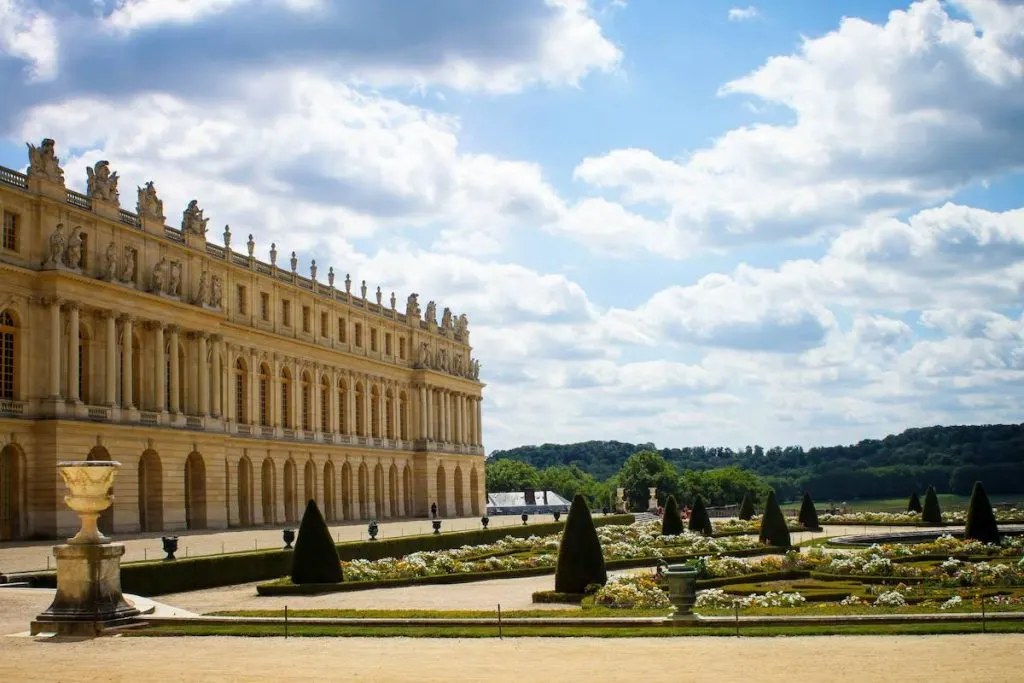
Paris, Banks of the Seine
The most visited UNESCO site in France, the Banks of the Seine, has been recognized as world heritage since 1991. From the Louvre to the Eiffel Tower, from the Place de la Concorde to the Grand and Petit Palais, the development of Paris and its tale can be illustrated throughout the River Seine.
The capital city of one of the first great nation-states of Europe, there is a lot to see here. Of note is the Cathedral of Notre-Dame and the Sainte Chapelle, which are both architectural classics – while Haussmann’s wide squares and boulevards here inspired late 19th- and 20th-century town planning around the world.
The property spans all the bridges, quays, and the Seine banks along its historic course (between the Pont de Sully and the Pont d’Iéna) along with the famous Ile de la Cité and the Ile St Louis. You won’t need my encouragement to visit the River Seine in Paris. Just do stop considering the excellent and rare examples of urban riverside architecture harmoniously superposed.
A succession of architectural and urban masterpieces built from the Middle Ages through to the 20th century, the Seine is unique in this world – and somewhere you can visit over and over, and over again.
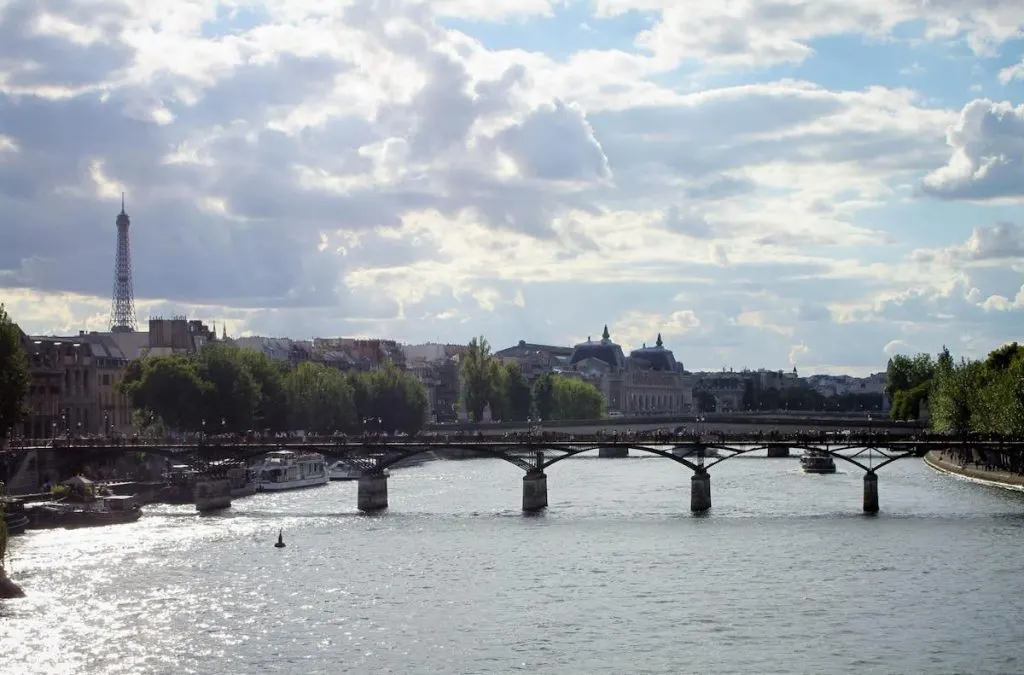
Place Stanislas, Place de la Carrière and Place d’Alliance in Nancy
Nancy is a gorgeous riverfront city in the northeastern of French renown for its late baroque and art nouveau monuments, many of which date back to its time as the former capital of the Duchy of Lorraine.
At the center of Nancy is the 18th-century Place Stanislas, which along with the Place de la Carrière and Place d’Alliance is protected as UNESCO World Heritage. This impressive square was adorned with gilded wrought-iron gates and magnificent rococo fountains, along with the cities embellished palaces and churches, resulting in an unusual medieval vibe. There is a reason why Nancy is known as the ‘the city with the golden gates’.
Nancy is somewhat paradoxically the oldest and yet the most representative example of a modern capital. It was from here that Stanislas Leszczynski, father-in-law of Louis XV, king of France, and wretched pretender to the Polish throne, was allowed to rein after his abdication the dukedoms of Lorraine for life. Thus Nancy was the temporary residence of a king without a kingdom. He governed from 1737 to 1766 and is considered to have been one of the first enlightened monarchs sensitive to the needs of the public. Nancy was developed as his capital, which magnified the sovereign’s influence and was also utilitarian – an idea uncommon at the time.
A unique creative achievement, Place Stanislas, Place de la Carrière and Place d’Alliance in Nancy affording grand architecture conceived to exalt the sovereign while gifting the public with its three grand squares with easy access to the town hall, the courts of justice and the “Palais de Fermes.” Before this, it was instead common for royal rulers to hide their grand spaces away from the public like Schloss Benrath in Dusseldorf or Schönbrunn Palace in Vienna.
A visionary approach to town planning, the squares of Nancy bear witness to the development of a modern city where a liberal monarch conducted out an excellent program of public spaces and buildings, demonstrating that he was amenable to the needs of the population. It is also just ridiculously beautiful!
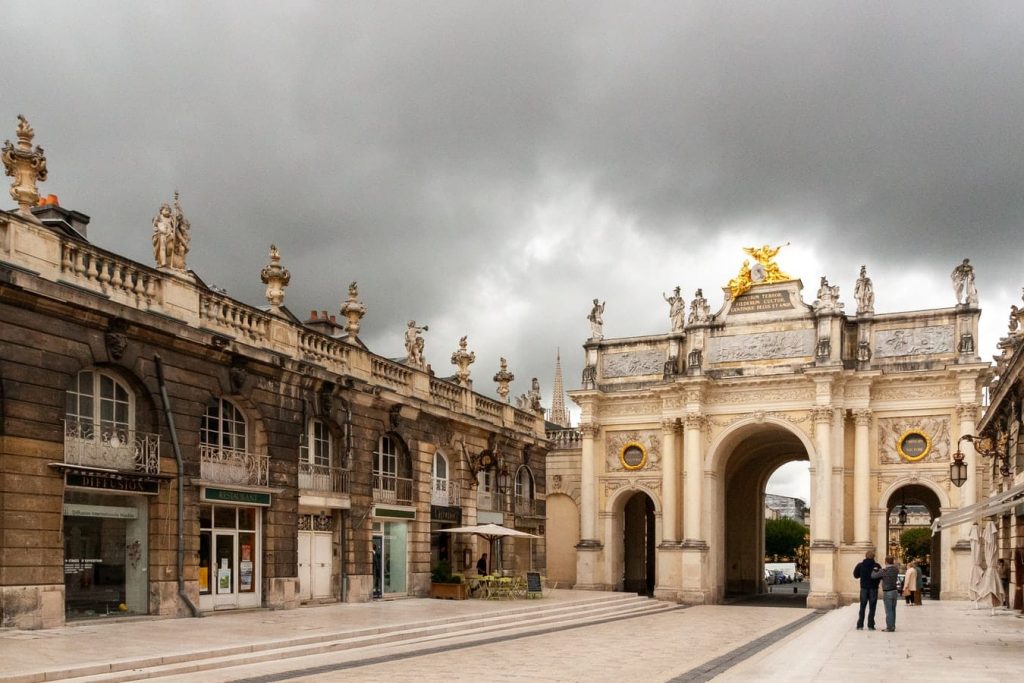
Pont du Gard (Roman Aqueduct)
Once upon a time, in 1AD precisely, Nîmes was an important city in Southern France. With a population of more than 50,000 inhabitants, the city needed a lot of water to supply running water to the houses along with its many fountains, pools, and thermal baths. But the low-lying plains surrounding Nîmes made it almost impossible for water to flow into the city.
The 49 meters high Pont du Gard, the highest Roman aqueduct in the world, was built in order to channel water from the natural springs of Uzès for over 50 kilometers into the city of Nîmes. It was truly an engineering marvel, delivering some 44,000,000 gallons of water daily in to Nîmes. As one of the best-preserved in the world, it’s no wonder this Roman aqueduct was inscribed on to the UNESCO World Heritage Site list in 1985.
While there is a museum on-site to learn more about the construction and how exactly the aqueduct channeled so much water to the Gallo-Roman city, adventurers won’t want to miss the chance to kayak down the Gardon River and under the massive arches of the Pont du Gard. Kayaking at Pont du Gard is one of the best ways to truly marvel at the Roman aqueduct bridge. After the kayaking adventure, admire the bridge from every possible angle by walking across the entirety of it.
Then after, visitors often enjoy refreshing with a picnic along the banks of the Gard to bask in the shadow of the 2000-year-old aqueduct.
Explored by Jennifer and Tim of the Luxe Adventure Traveler

Prehistoric Pile Dwellings around the Alps
By no means the most lascivious UNESCO World Heritage Site in Frane, this serial listing overs 111 individual sites across six countries. These sites protect the remnants of prehistoric pile-dwelling (or stilt house) villages dotted in and around the European Alps.
Built from 5000 to 500 B.C.on, the shores of lakes, rivers, or wetlands, these excavations of these sites have produced new evidence and insight into Alpine Europe’s life in the neolithic and Bronze Age.
Fifty-six of the sites are positioned in Switzerland, though in France you can find places around two lakes at Clairvaux-Les-Lacs and a few other spots.
Antithetical to common belief, the dwellings were not positioned over water but instead on marshy land where the piles afforded protection from occasional flooding. As the lakes have expanded in modern times, most of the piles are now underwater – leading the uninformed to think they have always been this way.
To be frank, for tourists, there is little appeal due to the underwater position. Still, to researchers, the settlements are an unusual group of uncommonly well-preserved archaeological sites of early agrarian societies in the region.
Prehistoric Sites and Decorated Caves of the Vézère Valley
Many people are surprised to discover that a valley in southwestern France is known as one of the cradles of European civilization. That’s because the Vézère Valley in the Dordogne region is chock full of stone-age, prehistoric sites, including a fascinating collection of cave paintings.
The “prehistoric valley” stretches about 40 kilometers along the Vézère River, with most of the sites located near the towns of Montignac and Les Eyzies. It’s about a two-hour drive east of Bordeaux. The region is ideally explored by car, but you can also take a day tour from Sarlat. The cave paintings in a number of the sites are recognized as masterpieces of prehistoric art, one of the main reasons the area was listed as World Heritage by UNESCO.
The most famous cave to visit is Lascaux in Montignac. Discovered in 1940 by a boy and his dog, the original cave was closed to visitors to preserve it. It contains 2000 paintings of animals, dating back to around 17,000 B.C. Now, visitors can see a replica of the cave where every painting has been reproduced to the last detail. It accurately captures the sense of wonder as to how and why paleolithic people created the art in a time when lighting and scaffolding didn’t exist.
Given that the cave doesn’t appear to have been used as a shelter, experts think Lascaux might have been a spiritual sanctuary. The most fascinating thing to me is that the real story remains a mystery left to the imagination.
Explored by Cindy Baker from Travel Bliss Now
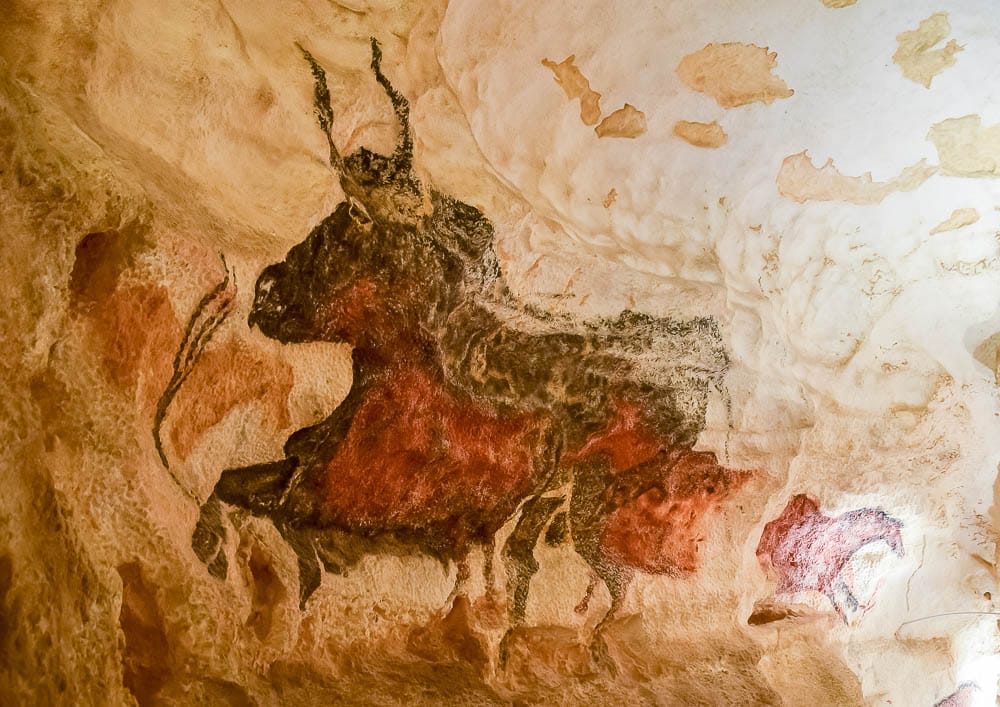
Provins, Town of Medieval Fairs
Provins is a beautiful town in north-central France, just a short train trip to Paris. Its claim to fame is its grand medieval architecture combines high ramparts with imposing fortified gates.
The fortified medieval town is located in the former territory of the mighty Counts of Champagne. It is inscribed by UNESCO as evidence of the early advancements in the creation of international trading fairs and the wool industry. The planned structure of Provins, which was created primarily to host these grand fairs and associated activities, has been exceptionally well conserved.
While a little sleepy these days, at the dawn of the beginning of the 2nd millennium, Provins was the venue for many of the great annual trading fairs crucial to the medieval European economy as they linked the countries of northern Europe with the Mediterranean world.
You can easily spend a few hours getting lost in its medieval charm and trying its wine and rose productions for which it is famous today. One of its main specialties is rose petal jam and rose honey – both of which are delicious.
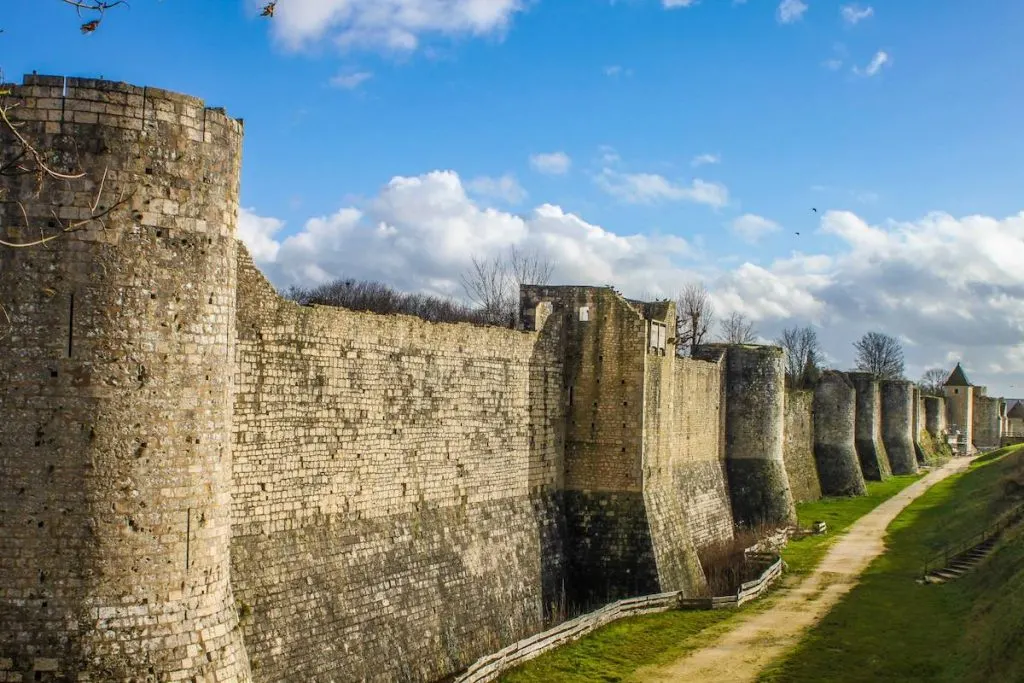
Roman Theatre and its Surroundings and the “Triumphal Arch” of Orange
Constructed during the reign of Emperor Augustus somewhere between 27 B.C. and A.D. 14 the Triumphal Arch of Orange designated a UNESCO World Heritage Site in 1981 is an exceptional example of Provence Roman architecture.
Measuring 19.57 meters long, 8.40 meters wide and a height of 19.21 meters it is also one of the oldest and largest of its kind anywhere from this Gallo-Roman period. Situated unpretentiously in the middle of the N7 road half a mile north of the historic center of Orange the Arch is easily accessible from the Provence and Cote d’Azur regions of southern France. Marseille and its charming Le Panier district are just 110 km south via the A7.
Visitors should aim for the ample parking provisions accessed directly from the N7 to the eastern side of the Arch. A short walk takes you to the Arch itself and a fascinating close-up view of this imposing and incredibly well-preserved monument. The design of two smaller openings either side of the larger central opening later replicated in Rome itself for the Arches of Septimius Severus and Constantine.
This oldest surviving example was first dedicated to the Gallic 2nd Legion veterans, founders of the Roman colony of Orange, and later to Emperor Tiberius. Decorated with various military and naval battle themed reliefs we were particularly impressed by the intricate geometric honeycomb design to the underside of the arches. Look out too for the numerous holes believed to have been left by medieval crossbowmen.
Guided group tours of the Triumphal Arch are also available from Orange Tourist Office.
Explored by Paul from The Two That Do
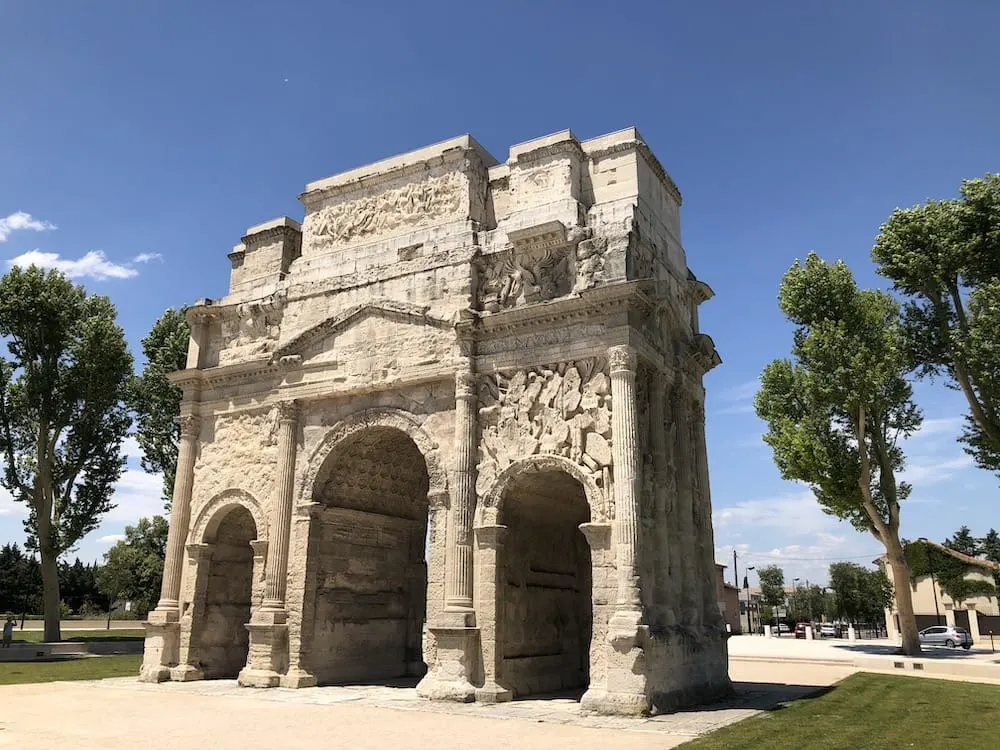
Routes of Santiago de Compostela in France
Santiago de Compostela, a town in the far northwestern corner of Spain, is where the remains of St. James are said to be kept. In the medieval ages, Santiago became a place of pilgrimage, and countless pilgrims from all over Europe walked hundreds of kilometers to reach it.
In recent decades, there’s been a revival of interest in this old pilgrimage route, which is actually an intricate network of many different routes with different starting points that all converge on Santiago. The most popular of these is known in Spanish as the Camino Francés, or the French Way, which passes through France en route to Spain. But even the French Way has multiple starting points within France.
Historically, the four main departure points were Paris, Vézelay, Le Puy and Arles, and it’s these four routes and the historical buildings along them that UNESCO has recognized. Although the most popular starting point for modern-day pilgrims is Saint-Jean-Pied-de-Port, a small village in the Pyrenees mountains just across the border from Spain. This was the starting point used by Emilio Estevez and Martin Sheen in the film The Way, which popularized the walk.
It’s now so well-trodden that pilgrims’ hostels can be found every few kilometers, and bars and restaurants have even started catering for vegan pilgrims and those with other dietary needs. The UNESCO listing includes 71 structures along the route. Most are churches and hospitals that offered services to pilgrims, although bridges, towers and gates are also included. These structures were chosen for their geographic diversity as well as their function in relation to the pilgrimage.
My husband and I walked the French Way in 2017 and found it to be a very moving spiritual experience, even though we are not religious people. Since then, we have vowed to walk a different route of the pilgrimage each year.
Explored by Wendy Werneth from The Nomadic Vegan
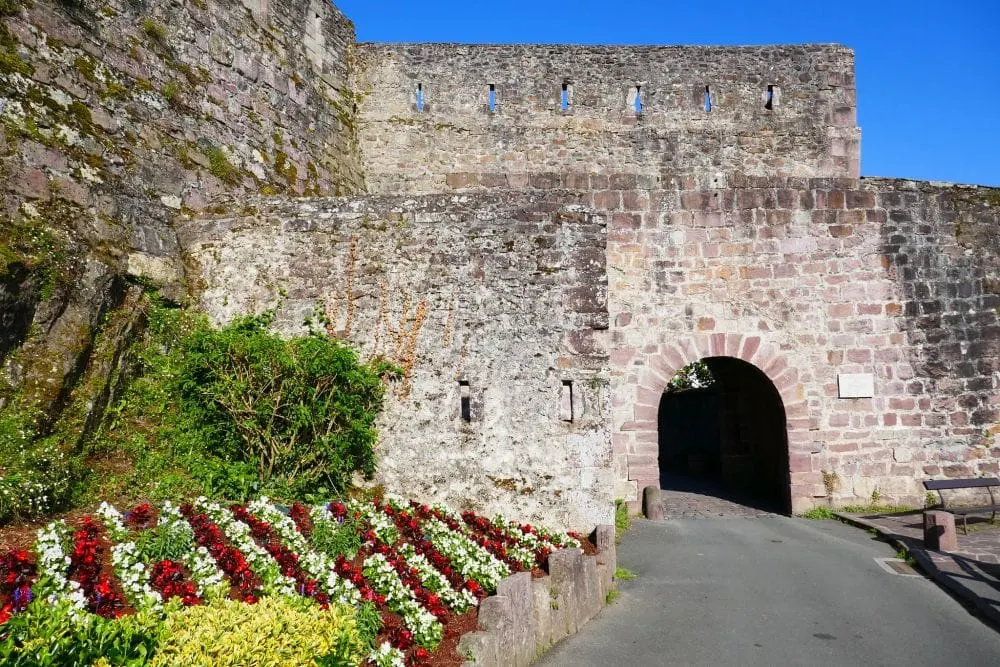
Strasbourg, Grande-Île and Neustadt
Strasbourg, Grande-Île and Neustadt was inscribed on the list of UNESCO World Heritage sites in 1988, which originally only included the historic center of Strasbourg, also known as Grande-Île. It was extended to include Neustadt in 2017 for its characteristic urban layout that was inspired by the Haussmannian model and Germanic style.
Strasbourg is located in East of France, next to the border of Germany that is situated on the other side of the Rhine river. It’s an important European city, home to 22 European institutions where eight of them belong to the Council of Europe Headquarters. It was the first city center to receive the status of a World Heritage Site in 1988, and it’s marvelous to stroll around the old town. It’s a symbol of Franco-German culture and history that dates back several hundreds of years.
Some of the oldest houses in Petite France, in the old town, date back to the 16th century. Tanner’s House is the oldest preserved house in the old town, dating back to 1572. Some buildings that shouldn’t be missed include the Gothic cathedral and Palais Rohan, where the first is a symbol of Rhineland architecture and the latter being a classic example of French classical architecture. Another striking feature of the city, that has been described in the World Heritage Status as well, are the many canals, flowing through the city center.
The historic center can be reached within 15 minutes walking from the central train station, on foot. There are also buses and taxis available for transportation upon arrival. From Paris, one can take the high-speed train in less than 2 hours. Tickets can be purchased on the same day, and the total journey time is estimated at around 1 hour and 46 minutes.
Explored by Alex Waltner from Swedish Nomad
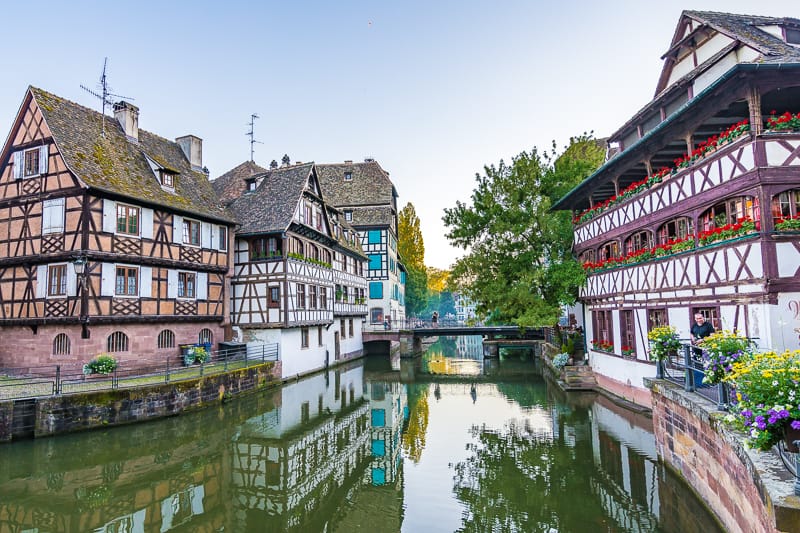
Taputapuātea
Taputapuātea on Ra’iātea Island is at the core of the ‘Polynesian Triangle,’ an enormous portion of the Pacific Ocean. Dotted over 100 small islands, the area was the last part of the globe to be settled by humans.
The UNESCO World Heritage site in Frech Polynesia, an overseas collectivity of France, covers two spectacular forested valleys on Ra’iātea Island and a pristine lagoon, coral reef, and an area of the open ocean. At the core of the protected area is the Taputapuātea marae complex, a political, ritual and funerary hub. It is distinguished by various marae, with each with distinctive functions.
Widespread in Polynesia, including Easter Island where they are called ahu or New Zealand (where marae are still a vital part of everyday life), the marae of Taputapuātea on Ra’iātea Island was a place where the world of the living converged the realm of the ancestors and the gods.
Taputapuātea was the center of a political alliance that brought together two extensive regions enveloping most of Polynesia and is an outstanding testimony to 1,000 years of mā’ohi civilization. It was a place of learning where priests and navigators from across the Pacific would group to offer sacrifices, share their understanding of the genealogical origins of the universe, and deep-ocean navigation.
Organized migrations from Taputapuātea settled the Hawaiian Islands, New Zealand, and other parts of East Polynesia. As new marae was established on each of these islands with a rock being taken from Taputapuatea, to act as a spiritual link.
Around 1763, warriors from Bora bora defeating Tupaia, and ransacked the island. This involved destroying the god-houses at Taputapuatea, destroying the platform, and cutting down the sheltering trees. The archaeological remains of Marae Taputapuatea were restored in 1994. Work to preserve the site continues, including reviving connections between communities of the Polynesian triangle.
As the paternal homeland of Polynesian culture, Taputapuātea maintains importance for people throughout Polynesia, as it signifies their origins, unites them with ancestors, and is an illustration of their spirituality. Should you find yourself in this area of the Pacific, a trip to Taputapuātea should be top of your list!
The Architectural Work of Le Corbusier, an Outstanding Contribution to the Modern Movement
From the exceptional range of architectural Work of Le Corbusier, these 17 sites across seven countries are a monument to the originality of a new architectural language that radically diverges from those of the past. These buildings were created over a 50 year period, which Le Corbusier himself characterized as “patient research.”
There are 10 French world heritage buildings associated with this listing. Still, the most impressive is the Unité d’ habitation in Marseille (France), a modernist residential housing design concept used as a model for several late housing developments found throughout Europe. The Unité d’ habitation, along with other constructs on this list shows how the Modern Movement endeavored to develop novel architectural techniques during the 20th century in response to the rapidly changing needs of society. The Colline Notre Dame du Haut, a Roman Catholic chapel in Ronchamp built-in 1955 is also a particularly famous example of the architecture by Le Corbusier in France.
Other standout buildings internationally include the Complexe du Capitole in Chandigarh, the National Museum of Western Art in Tokyo, the Maison Guiette in Antwerp, and the House of Dr. Curutchet in La Plata. Each is considered unique treasures of creative genius while also showcasing the internationalization of architectural practice across the globe.
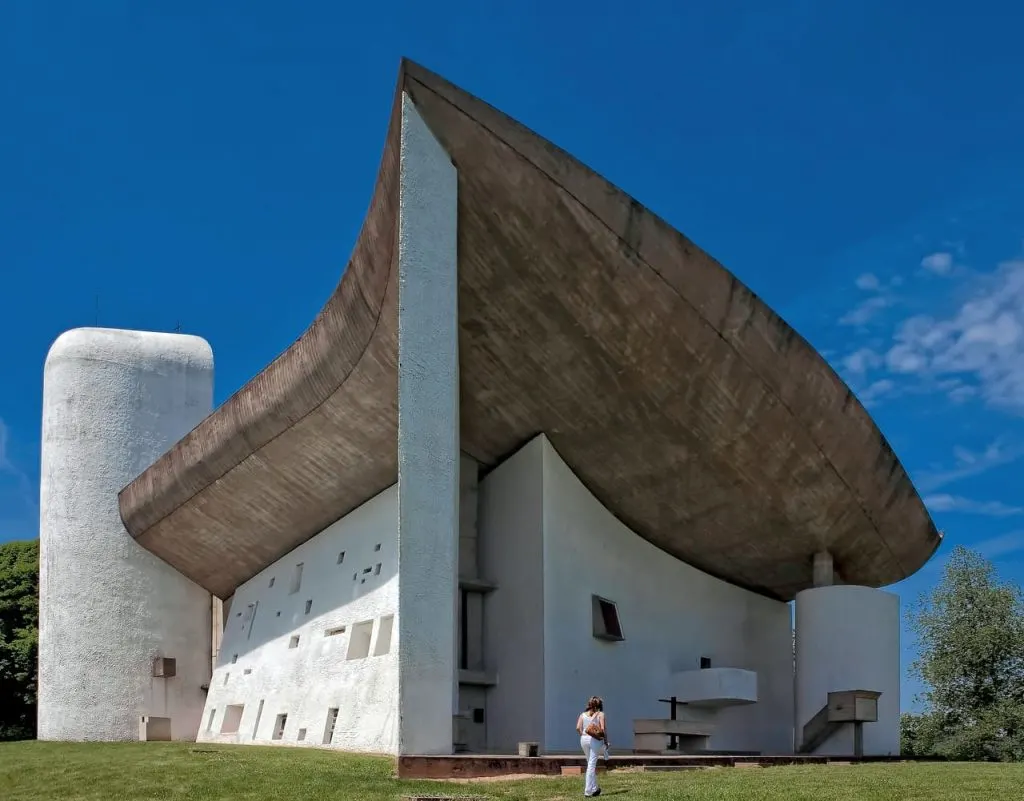
The Causses and the Cévennes, Mediterranean agro-pastoral Cultural Landscape
The Causses and the Cévennes is a truly unique area in Southern France. It has been added to the UNESCO World Heritage Sites List in 2011 for the rich cultural and historic heritage of the Mediterranean agro-pastoralism. The site includes parts of the Cévennes National Park and the Grands Causses Regional Natural Park with the amazing Gorges du Tarn and Gorges de la Jonte.
The high plateaus of the Grand Causses covered with grasslands and groves contrast with the deep gorges cut by the rivers Tarn and La Jonte. Nature is simply stunning, but it’s because of the interaction between humans and nature that this area is so important.
If you want to learn more about the traditional ways of farming and sheep keeping, you should visit the ecomuseum Ferme Caussenarde d’Autrefois. There aren’t many places left in Europe where transhumance is still being practiced but the Causses and the Cévennes is one of them.
The area of the Causses and the Cévennes is not easily reachable by public transport, so you’ll need a car to be able to explore it. This region has the perfect ingredients for a road trip: hairpin bends, steep cliffs, charming villages, and breathtaking views. It is the ultimate destination for those who want to detox from the daily hassle and find tranquillity in a place surrounded by beautiful nature.
Explored by Daniela from Ipanematravels.com
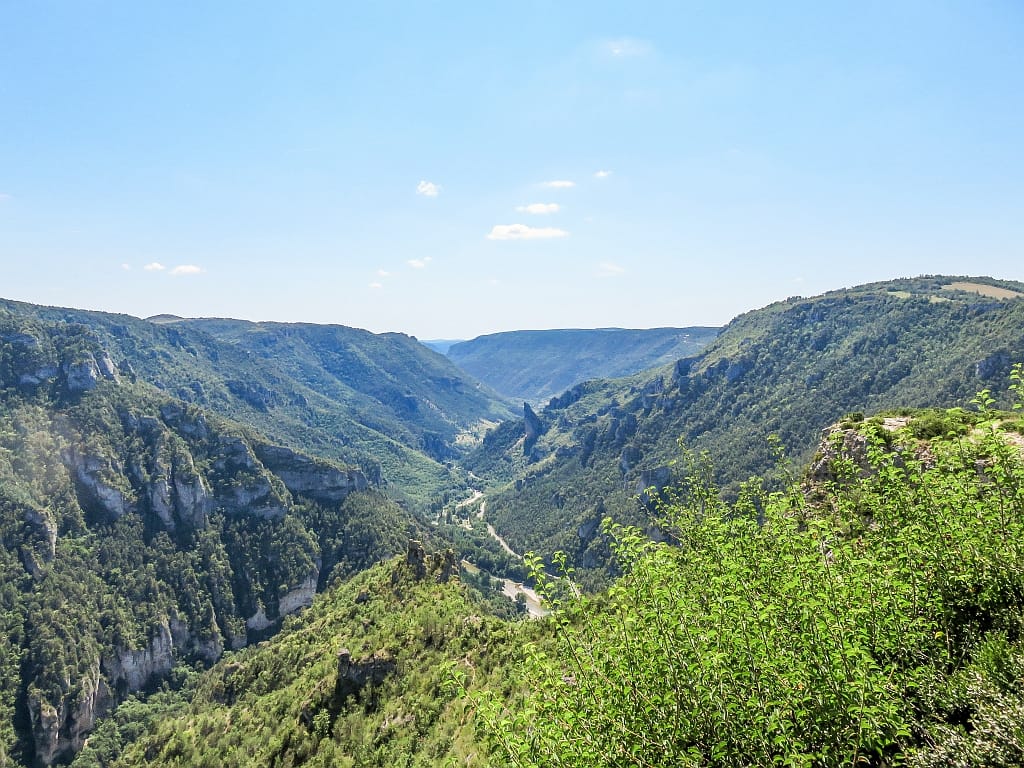
The Climats, terroirs of Burgundy
The Climats, terroirs of Burgundy, are a group of properties inscribed as world heritage sites in France. They epitomize the viticulture traditions of the Burgundy wine region.
A Climat is a name for a particular vineyard site connecting its vine plots, grape variety, and know-how while terroirs, is an agricultural system practiced that is sensitive to local geography, geology, and climate. The exceptional illustration of grape cultivation and winemaking here has evolved since the Middle Ages.
The climats protected here by UNESCO are accurately delimited vineyard areas on the slopes of the Côte de Nuits and the Côte de Beaune near to the city of Dijon. They are distinguished by their precise natural conditions (geology and exposure) and the vine varieties developed by human cultivation. Over time each climat has become synonymous with the exact wine they produce.
Nowhere else has the urge to attach the wine to the site that created it been pushed as far, and in such an extravagant manner. This has produced in profoundly compartmentalized vineyard structure, excellent expertise, beautiful landscapes, historic towns, and a precise economy and culture. The world is used to describe it all.
This cultural landscape listing includes the vineyards and associated production units, the town of Beaune, which speaks to the commercial dimension of the production system and the historic center of Dijon, which substantiates the regulatory system that allowed the unique climats system to develop. The many vintages emerging from this mosaic of vineyards, from two single varieties (Pinot Noir and Chardonnay), represent the extreme diversity.
Should you be lucky enough to visit, hiking trails of the Burgundy’s “Climats” area are now well marked and can be explored with an app. Four circuits are prepared: around the important Château du Clos de Vougeot (7 km), in the heart of the “Grands Crus de Bourgogne” (6 km), the “Butte de Corton” (6 km) or the “Circuit of the Crests” (11 km). Each is unique, so why not stay a few days and try them all.
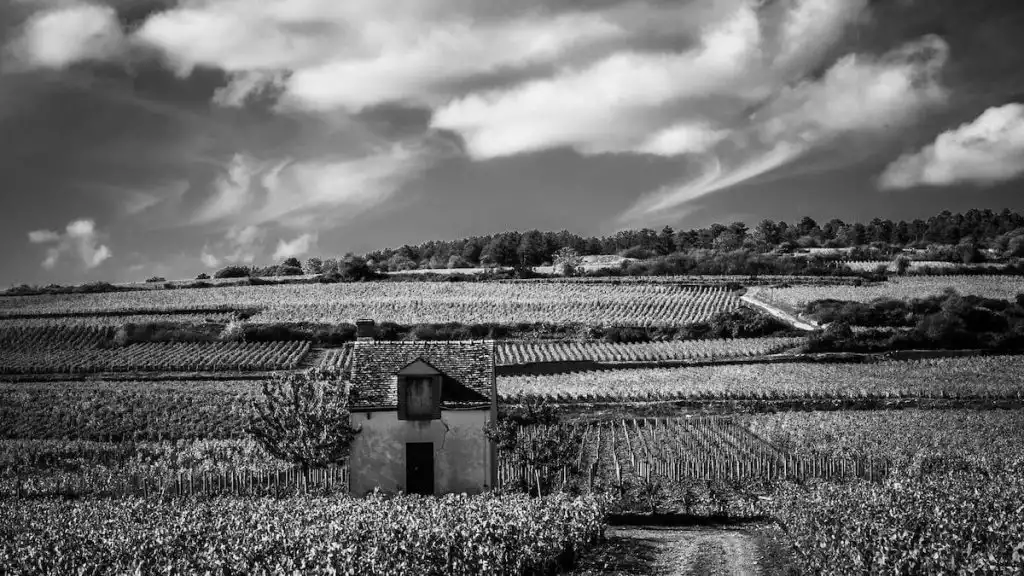
The Loire Valley between Sully-sur-Loire and Chalonnes
The Loire Valley is home to the famous Loire Valley Castles but also medieval cities and towns, impressive cathedrals, beautiful nature, and some of the country’s best wines.
Since the year 2000, the area between Sully-sur-Loire and Chalonnes is listed UNESCO World Heritage site for its cultural landscape symbolic of human interaction with the river Loire. With this inscription, UNESCO recognizes its universal value, authenticity, and integrity. This landscape also illustrates the influence of the Rennaissance and Age of Enlightenment ideals on thought and creation in Western Europe.
The designated area covers a 200km long, stretch of land along the river and it includes the towns of Blois, Chinon, Orléans, Saumur, and Tours. The site is an extension to the Castle of Chambord, which was already UNESCO World Heritage since 1981. This is one of the most impressive châteaux in France and in the whole world, a beautiful example of French Renaissance architecture. Commissioned by King François I, it is believed that Leonardo Da Vinci was involved in the project.
This area in the region of Centre-Val-de-Loire is perfect for a relaxing holiday close to nature and to savor the good things in life. Spend at least one full day to explore each of these sites. Learn about their history and visit their main sights but also take the time to taste their local specialties and their wines.
Explored by Norbert from France Bucket List
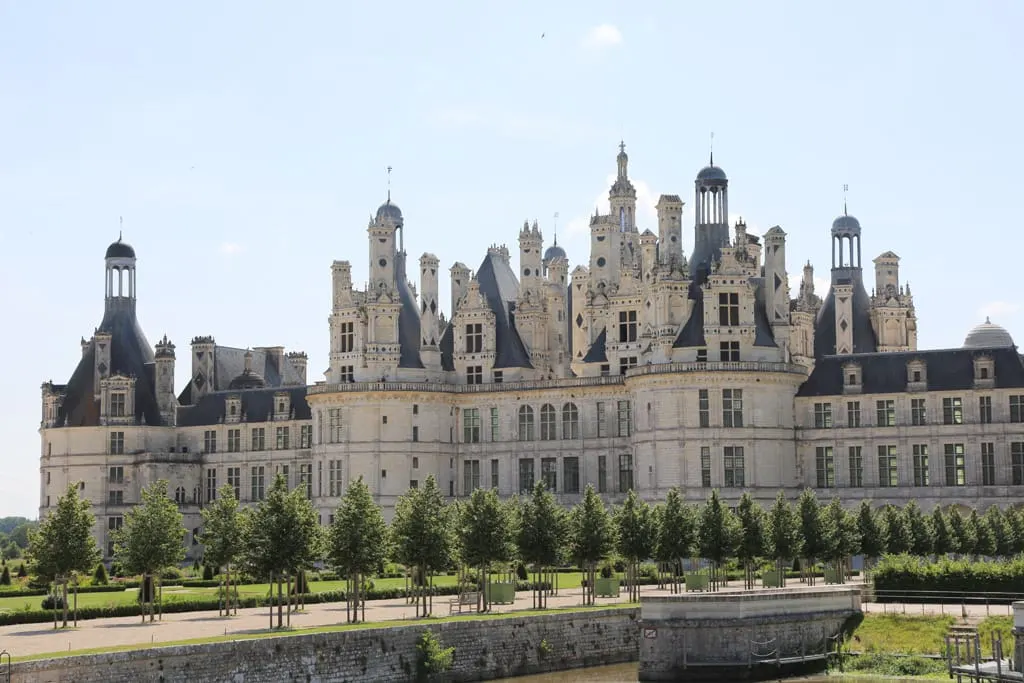
Vézelay, Church and Hill
Vézelay Abbey is a Benedictine / Cluniac monastery in Vézelay in eastern-central France built between 1120 and 1150.
Shortly after its foundation, the abbey of Vézelay received the relics of St Mary Magdalene and ever since has been a prominent place of pilgrimage throughout France, Europe, and the world. The abbey was used by St Bernard, who preached in the advocation of the Second Crusades here. Later, Richard I of England and Philip II of France meet at the Vézelay Abbey before deciding to go ahead with the Third Crusade in 1190.
With its sculpted capitals and portal, the 12th-century monastic church built here is considered a jewel of Burgundian Romanesque art and architecture. It is also included in the world heritage site.
The beginning of Vézelay’s deterioration corresponded with the well-publicized discovery of the body of Mary Magdalene in Provence in 1279. It continued with the sacking of the site by the Huguenots in 1569, neglect in the 17th and 18th centuries, and further destruction during the French Revolution.
An extensive and triumphant restoration process was undertaken between 1840 and 1861 thankful, along with ongoing works since the meaning the Vézelay, Church, and Hill is still a historical and spiritual attraction of France today. The Roman and Gothic Architecture is worth the visit alone.
Natural UNESCO World Heritage Sites In France
Chaîne des Puys – Limagne fault tectonic arena
If you wish to explore one of the most underrated regions in France, Auvergne will be the perfect place for you. Located in the center of France, it’s home to one of the most stunning natural landmarks in the world!
The Chaines des Puys is formed of 80 volcanoes, all lined up forming a range of 45 km long! After applying for over a decade, it was finally added to the UNESCO world heritage list in 2008. The best way to get there is from Clermont-Ferrand. You can take a train from the city center to the Puy de Dome. This volcano is still considered an active volcano even though the last eruption is a few thousand years old. The most popular activity is hiking but it’s also a great playground for paragliding. From the top, if the weather is nice, you can see all the way to Mont Blanc. Pretty cool, right?
If you want to discover some less known volcanoes within the Chaines des Puys, head down to the Cantal. It’s home to the Puy Mary and the Puy de Sancy. If you are visiting the area in winter, skiing is a must-do! You will find two resorts: Le Lioran and Super Besse. Although they are not as impressive as the ones you will find in the Alps, there is something pretty magical about the idea of skiing on volcanoes! Finally, the Chaine des Puys also features a theme park! If you’ve ever dreamt of learning more about volcanoes while having fun, Vulcania will be the perfect place for you!
The Chaine des Puys has been there for thousands of years. Not only it is a great place to visit but it’s also extremely important for the local communities. In Auvergne, everything comes from volcanoes. Water (Volvic), plants… everything we eat and drink is based on local products that you won’t find anywhere else in France. Nature, traditions, and delicious french food, that’s what you will get when you visit the Chaine des Puys.
Explored by Pauline from BeeLoved City
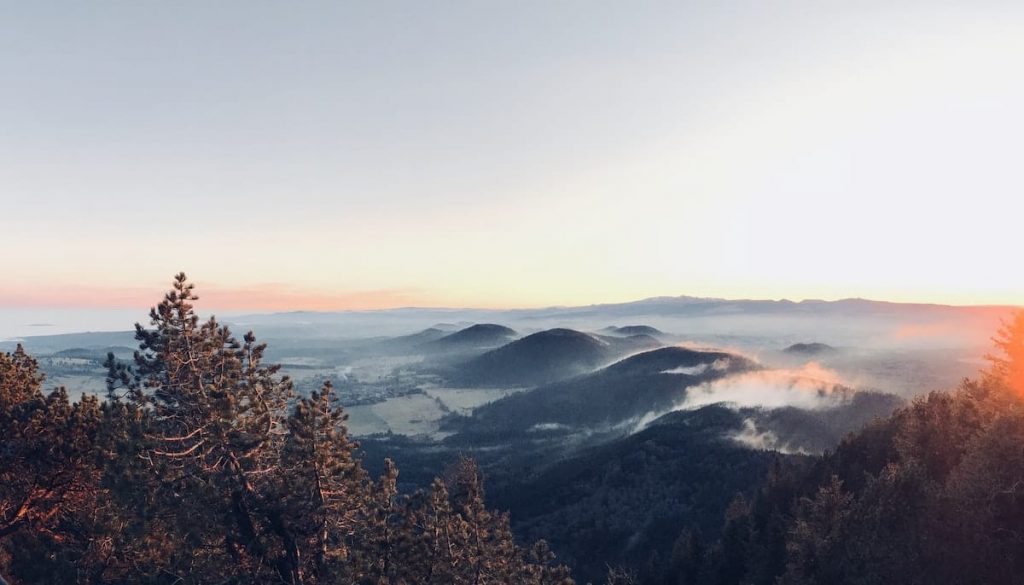
French Austral Lands and Seas
The French Austral Lands and Seas constitute the most comprehensive area of (exceedingly rare) surfaced landmasses in the southern Indian Ocean. Just look at a globe, this is one vast area of almost nothing but water.
The world heritage site covers the Crozet Archipelago, the Kerguelen Islands, Saint-Paul and Amsterdam Islands, and 60 smaller sub-Antarctic islands. This emerged oasis in the otherwise vast Southern Ocean covers more than 67 million hectares (including the highly productive seas around the land) and sustains one of the highest densities of birds and marine mammals in the world. Because of their oceanographic and geomorphological characteristics, the water surrounding the islands are notably productive and are the foundation of a rich and diverse food web.
Of particular note in the French Austral Lands and Seas is the massive population of King Penguins and Yellow-nosed albatrosses – not seen at these numbers anywhere in the world. The isolation of these islands from most of humanities activities ensures they are remarkably well-preserved and thus provide a haven for scientific research, including to increase our understanding of biological evolution and the regulation of the carbon cycle. The grand volcanic aspects, along with the wild and abundant nature of the site, make it an incredibly beautiful world heritage site – even if exceptional challenging to reach.
The territory has no permanent civilian population and only military personnel, officials, scientific researchers, and support staff in the summer. Economic activity is primarily restricted to maintaining meteorological and geophysical research stations along meeting the need for the limited French fishing fleets in the area.
Gulf of Porto: Calanche of Piana, Gulf of Girolata, Scandola Reserve
Ready to get off the mainland and head to an island paradise? France has so many amazing UNESCO World Heritage Sites, but it’s nice to get an entirely different feel from the ones you can find in the countryside and in Paris.
The Gulf of Porto offers a combination of outdoor activity and beautiful scenery. Located on Corsica, you can find it as a part of the Regional Natural Park of Corsica. To get more geographically accurate, it’s located on the Scandola peninsula. Along with stunning blue waters, scrubland, and a host of marine life, there’s a lot to see and do.
For photographers, you won’t want to miss the looming red granite cliffs that give the area its unique look. You’ll also want to check out the Genoese Tower near the small town of Porto, as well. Many choose to see the local flora and fauna by taking a boat ride around the peninsula. Hikers will love the Corsica Regional Nature Park, which offers nature trails. You’ll also want to make sure the Calanche de Piana creeks, another UNESCO World Heritage Site located nearby.
Overall, the Gulf of Porto is a great way to get away from some of the more touristed areas in France—you don’t have to head to Nice or Provence to get amazing weather, an opportunity to see the outdoors, and delicious food. If you want to experience something new in France, the Gulf of Porto is a great opportunity to do so.
Explored by Alex from Alex on the Map
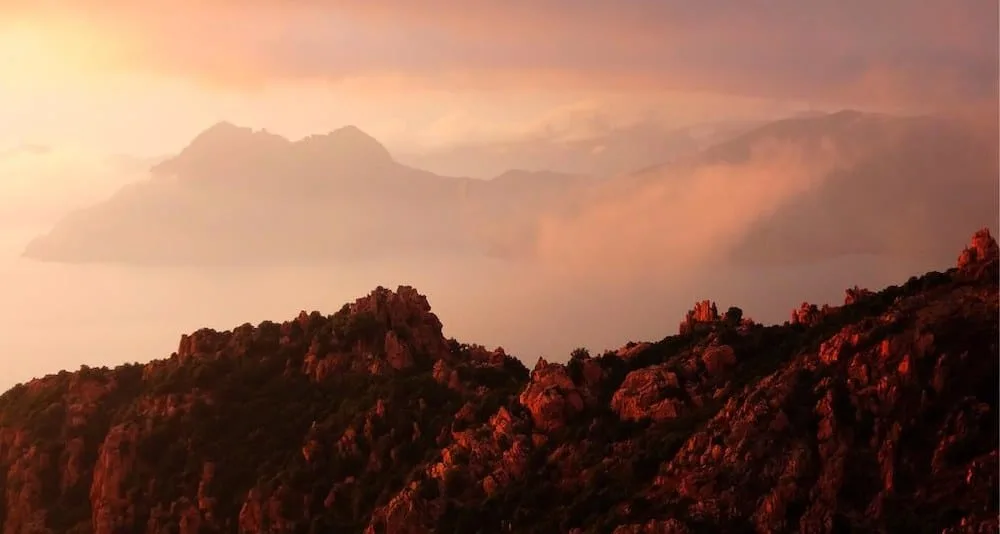
Lagoons of New Caledonia: Reef Diversity and Associated Ecosystems
The Lagoons of New Caledonia UNESCO site encompasses six marine areas that showcase the incredible variety of coral reefs and related ecosystems in the Pacific Ocean archipelago.
Yes, New Caledonia is still part of France. Unlike Vanuatu, they have not voted for independence yet. Therefore, they are counted as UNESCO World Heritage Sites in France – even though they are on the opposite side of the world.
The Lagoons of New Caledonia are the third most extensive reef systems globally and are unquestionably of outstanding natural beauty. They protect an outstanding amount of coral and fish species and also include continuity of habitats from mangroves to through to seagrasses and then a diverse assembly of reef structures. Unlike reefs in places like Cuba or Malta, which are often damaged beyond recognition, the lagoons of New Caledonia represent largely intact ecosystems, with robust groups of large predators and a vast number and diversity of big fish species.
They also provide a safe habitat for many of the world’s most symbolic or endangered marine species. These include turtles, whales or dugongs (the third-largest population in the world is found here). The richness and heterogeneity of underwater landscapes and coastal backdrops make New Caledonia’s UNESCO site an off-beat yet a sought-after destination for anyone interested in marine biology, diving, or snorkeling.
There is only one international airport and no direct flight to France (though you can transit through Papeete) – but connections to major cities in the Pacific like Auckland, Sydney, Tokyo, and Osaka.
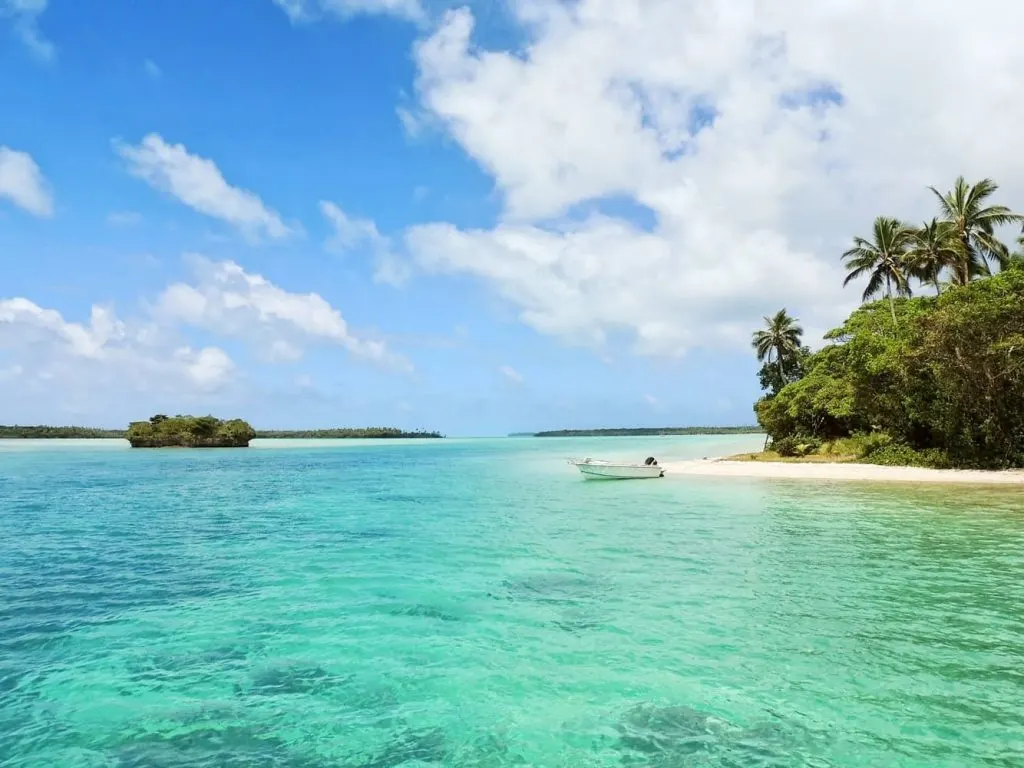
Pitons, cirques and remparts of Reunion Island
The Pitons, cirques, and remparts of Reunion Island UNESCO world heritage site correspond with the central area of La Réunion National Park. This park comprises more than 100,000 hectares or around 40 % of Reunion Island, a French overseas department in the south-west of the Indian Ocean.
While it is an island, the appeal comes less from white sand beaches than its mountain paths and overwhelming landscapes. This island is formed of two towering volcanic cones, with massive walls and three cliff-rimmed calderas. Given this, it is unsurprising that Reunion Island is one of the world’s best climbing destinations. The site incorporates a great diversity of mountainous terrain and dramatic escarpments, forested crevasses, and basins, producing a visually arresting landscape.
The island is also notable for the wide diversity of plant life present. It exhibits a high level of endemism (as is common in New Zealand and other isolated islands) and is considered a global center of plant diversity. The mixture of volcanism, tectonic landslides, heavy rainfall, and stream erosion also creates a high variety of physical landscapes. There are humid subtropical rainforests, misty cloud forests, and shrubland forming an extraordinary and intriguing pastiche of ecosystems and scenery features for travelers to explore.
Being located around 700 kilometers east of Madagascar, and 200 kilometers south-west of Mauritius, getting to Reunion Island isn’t easy. The majority of flights arriving here come only from France, with a few other flights from around the Indian Ocean like Bangkok.
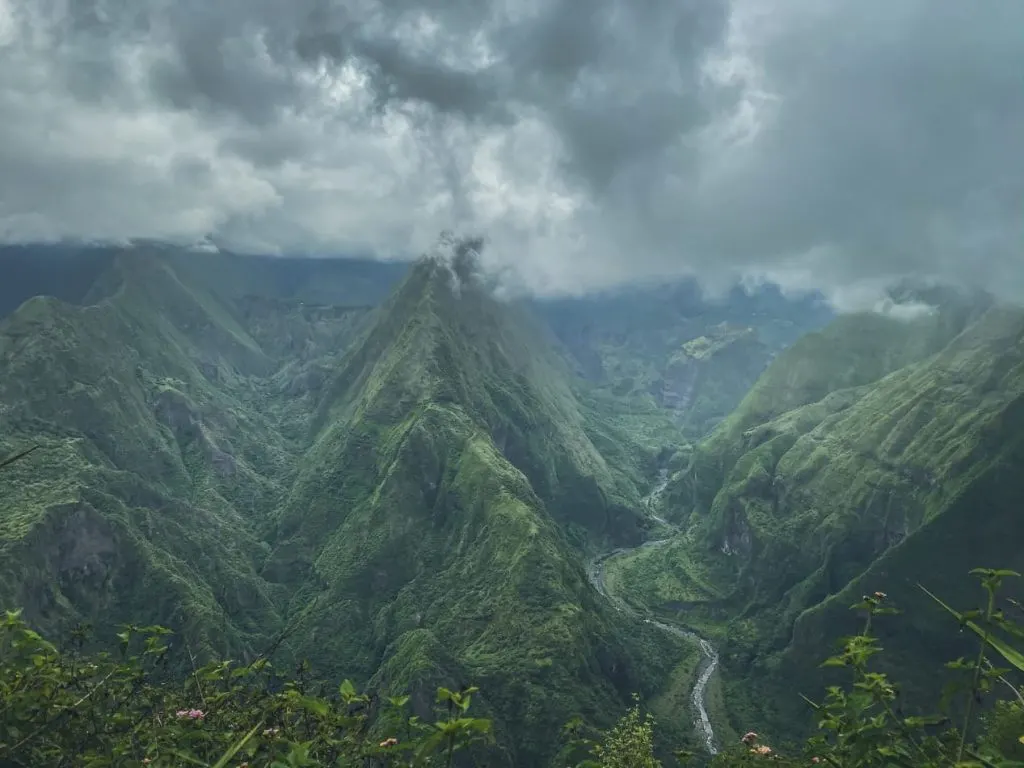
Mixed UNESCO World Heritage Sites In France
Pyrénées – Mont Perdu
Mont Perdu is a UNESCO World Heritage site in the French Pyrenees, right on the border between France and Spain. One side is called ‘Mont Perdu’ and the other side is Monte Perdido (Spanish)
Mont Perdu is the third highest mountain in the Pyrenees- the peak of rises up to 3,352m (the peak is technically on the Spanish side). The site is home to two of Europe’s largest and also deepest canyons on the Spanish side, along with three major cirque walls on the northern slopes in France.
The mountain is inscribed to UNESCO because of the many lakes, canyons, cirques, and distinctive alpine flora found in the area. One of the rare species found here is the Lammergeier (Bearded Vulture), which has a 3-meter wingspan. The Pyrenees is one of the few places where it is possible to see these birds in Europe.
There are a huge number of hikes and walks you can do, but if you can only do one, head to the Cirque de Gavarnie. This incredible place is one of the biggest cirques (natural amphitheaters) in Europe and is home to Europe’s second-highest waterfall- Gavarnie Falls.
You can do a short hike around the park (up to the cafe is a good endpoint), or a longer one all the way to the foot of Gavarnie Falls. Be warned- dogs aren’t allowed all the way to the Falls, only up the cafe (which is still a decent 1.5-hour walk.)
You can access Mont Perdu easily by car as part of a France road trip. Buses do run there but not very frequently and there are no trains nearby. In winter, the entire area becomes a ski resort, and many roads shut, so Spring- Autumn is the best time to visit.
Explored by Kat from the Wandering Bird

And there you have it—all of the world heritage sites in France. Hopefully, you have learned something about this country’s history already through these sites. Maybe some of them have even inspired your future travels. While overtourism is most certainly an issue, France has recognized this issue and is taking steps in the right direction.
If you get the opportunity to visit, please make choices that encourage the protection of these special places for future generations. This includes consideration of the transport you take in France, along with which European tour companies you choose to support.
If you haven’t quite had enough, France also has 37 tentative UNESCO sites which it has proposed but has yet to be ratified. These may or may not be included at a future date but are very telling in that they are what each country considers to be it’s cultural and/or natural heritage of outstanding universal value.
They typically are worthy candidates for inscriptions and should be of interest for adventurous travelers who want to explore under-the-radar spots before they become touristy.
Happy exploring!
Further Things To Consider Before Any Adventure
Now you’re all set and prepared to explore our big wide world, why not sort out everything else out all in one go? If necessary for your ETIAS visa travel plans make sure you have brought proper travel insurance, protected your privacy by getting a secure VPN, compared all the top hotel booking sites to find just what you’re after, reserved an unbeatable rental car price, and – of course – booked the best flight deals!
Or maybe just forget it all and go for a last-minute cruise or effortless tour instead?
Many budget travelers (including me) indulge in worldwide airport lounge access, so we can experience luxury while still slumming it in economy. Naturally, we would never leave home without a more general travel guide since we couldn’t possibly cover everything here!
Just add an adventurous attitude and plenty of smiles – they go a long way – and that about covers it all! Now go out, find your own path, and don’t forget to share your best inspiration stories with me on Facebook, Twitter, and Instagram…I’d love to hear from you!

